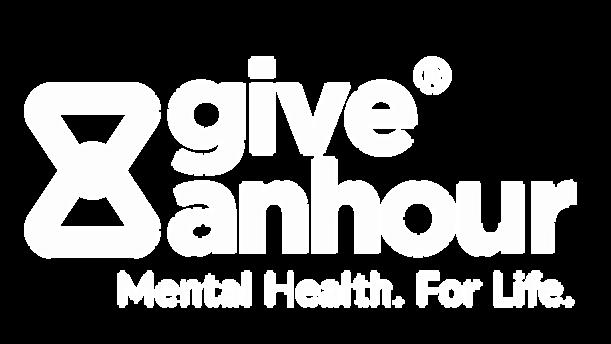

Vetrepreneurs
Helping Fellow Veterans
RESOURCES &
VETERANS IN TRANSITION Military CAREERS-EDUCATION




Vetrepreneurs
Helping Fellow Veterans
RESOURCES &
VETERANS IN TRANSITION Military CAREERS-EDUCATION

Dreaming of a new kitchen or need a new roof? Navy Federal home equity loans offer:
flexibility—Fixed-Rate Equity Loan¹ or Home Equity Line of Credit options² savings—$0 application and origination fees, and $0 closing costs— saving you hundreds opportunities—pay for a large expense or consolidate high-interest debt • • • navyfederal.org/equity
Explore your options at navyfederal.org/equity

Navy Federal is federally insured by NCUA.
¹Home Equity Loans are fixed-rate loans. Rates are as low as 7.340% APR and are based on an evaluation of credit history, CLTV (combined loan-to-value) ratio, loan amount, and occupancy, so your rate may differ. A sample Fixed-Rate Equity Loan monthly payment based on $100,000 at 7.650% APR for 20 years is $814.79. Taxes and insurance not included; therefore, the actual payment obligation will be greater. Navy Federal will pay for all closing costs on new Fixed-Rate Equity Loan applications dated on or after 6/1/23. Covered closing costs include lender fees and fees paid to third parties, such as settlement fees, credit reports, flood determinations, property valuations (including appraisals, if required), title searches, lender’s title insurance, recording, mortgage transfer taxes, and government charges. For loan amounts of up to $250,000, closing costs that members may pay typically range between $300 and $2,000. The member is responsible for escrow payments and/or prepaid costs, if required, including property taxes and assessments, homeowners’ and flood insurance premiums, association fees/dues and assessments, and prepaid interest. You must carry homeowners’ insurance on the property that secures this plan. All loans subject to approval. Offer is subject to change or cancellation without notice. 2Home Equity Lines of Credit (HELOC) are variable-rate lines. Rates are as low as 7.750% APR and 8.750% for Interest-Only Home Equity Lines of Credit and are based on an evaluation of credit history, CLTV (combined loan-to-value) ratio, line amount, and occupancy, so your rate may differ. HELOC has a minimum APR of 3.99% and a maximum APR of 18%. Members who choose to proceed with an Interest-Only HELOC may experience significant monthly payment increases when the line of credit enters the repayment phase. Navy Federal will pay for all closing costs on HELOC applications dated on or after 6/3/24. Covered closing costs paid to third parties include settlement fees, credit reports, flood determinations, property valuations (including appraisals, if required), title searches, lender’s title insurance, recording, and government charges. The member is responsible for prepaid interest and escrow payments for first lien HELOCs. Member must carry homeowners’ insurance on the property that secures the HELOC. For loan amounts up to $250,000, closing costs typically range between $300 and $2,000. Applications for a HELOC include a request for a HELOC Platinum Credit Card. All loans subject to approval. Offer is subject to change or cancellation without notice. Rates are subject to change. HELOC loans are not available in Texas. © 2025 Navy Federal NFCU 14215 (7-25)


Publisher
Editor-In-Chief
Mike Miller
Monthly Columns
What’s Next Transition
Eve Nasby
Human Resources
Paul Falcone
Franchise Dreams
Doug Dwyer
Successful Transitioning Stories
Homeland is a veteran-focused magazine throughout the country. It serves to assist all veterans, active military as well as their spouses and families.
It’s the leading veterans magazine emphasizing resources, support and focusing on topics and issues facing today’s veteran community. Homeland focuses on resources, support, community, transition, mental health and inspiration for our veterans, & military personnel.
The content is the driving force behind our magazine and the connection it makes with our veterans, service members, military families, and civilians.
The magazine is supported by a distinguishing list of veteran organizations & members, resource centers, coalitions, veteran advocates, and more.
We are honored to share the work of so many committed and thoughtful people.
Despite all the challenges, our team has upheld their focus and let not one opportunity go to provide resources and support to our veterans & military personnel.
On behalf of our team, we wanted to take this moment to say THANK YOU to the readers and the military and veteran community for supporting our magazine. With that support we aim to make a difference and continuing to make a profound impact on the quality of life for our veterans, military personnel and their families.
If you want to catch up on the current and all past issues please visit: www.homelandmagazine.com/archives
Mike Miller
Editor-In-Chief
mikemiller@homelandmagazine.com www.homelandmagazine.com
Dr. Julie Ducharme
Veterans in Business
Barbara Eldridge
Risky Business
Hadley Wood
Real Talk: Mental Health
Hope Phifer
PTSD: Reclaiming Control
Robert ‘Bob’ Cuyler, PhD
Legal Eagle
Kelly Bagla, Esq.
Veterans Chamber Commerce
Joe Molina
Contributing Writers
Wounded Warrior Project
Disabled American Veterans
(In-House) Correspondents
Holly Shaffner
CJ Machado
Lori Noonan
Homeland Magazine 9528 Miramar Road, #41 San Diego, CA 92126 (858) 275-4281
mikemiller@homelandmagazine.com
Homeland



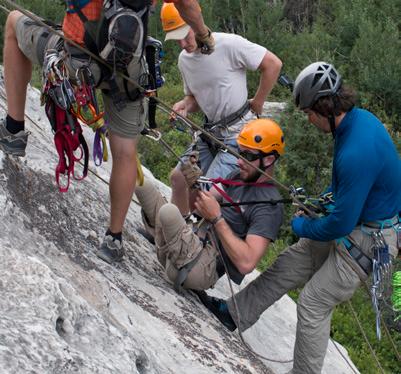



















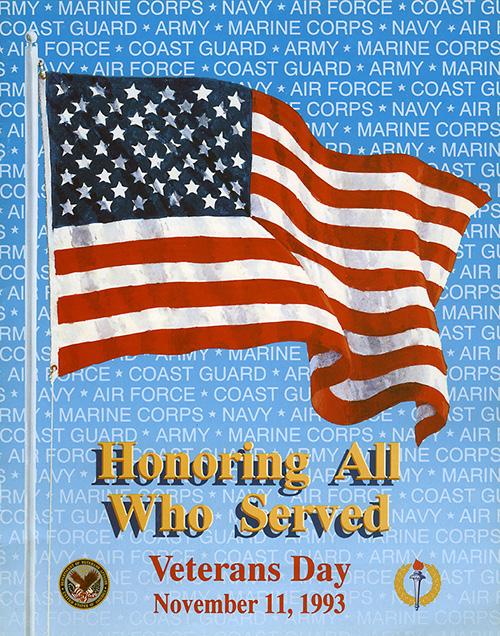









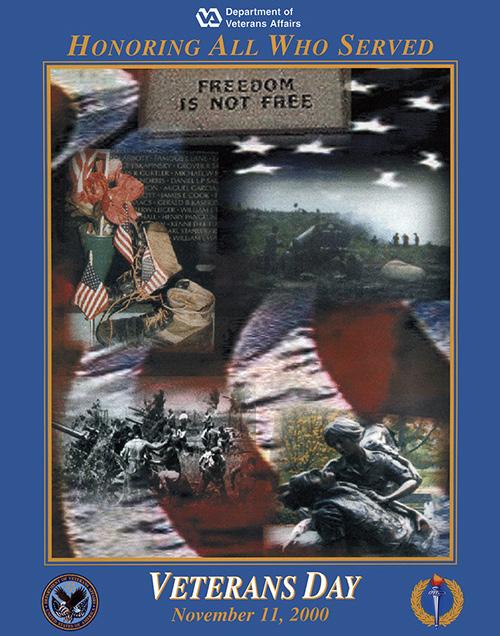







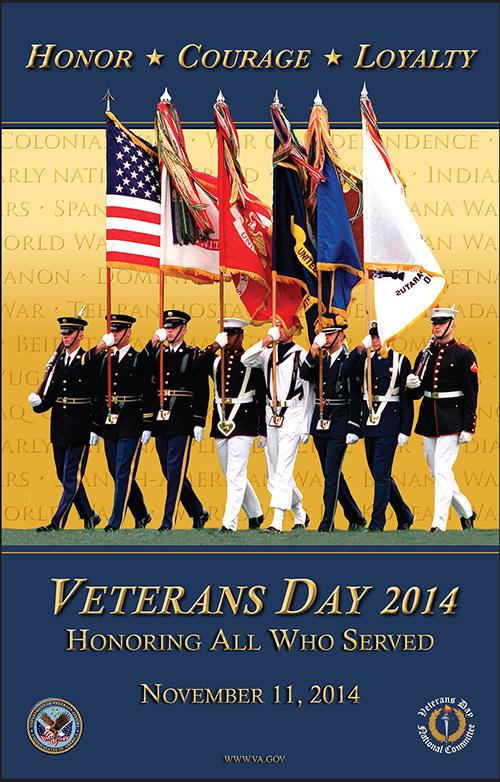
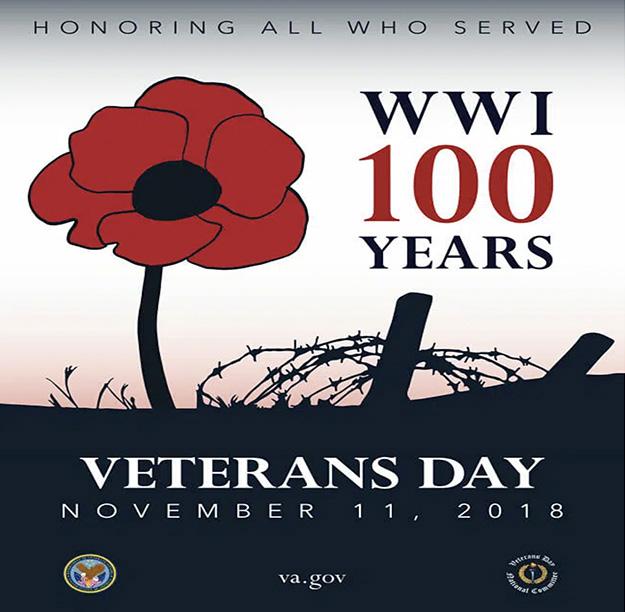

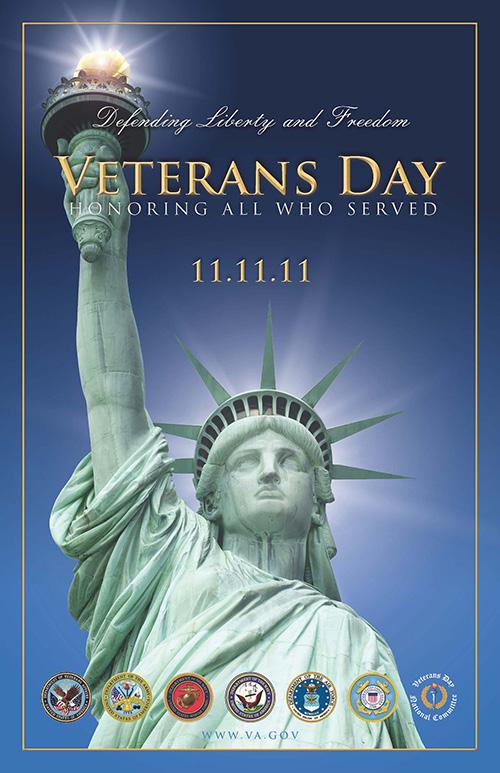











Homeland Magazine recently interviewed Major General James W. Lukeman, President and CEO of the Marine Corps Heritage Foundation, as he reflects on 250 years of Marine Corps history and its enduring values of courage, honor, and service. As the nation celebrates this milestone, he shares how Americans can join the mission—by visiting, donating, and helping preserve the Marine Corps’ legacy for future generations.

Homeland: Tell us about yourself and what the Foundation does?
Lukeman: I grew up in a Marine Corps family, was commissioned via Notre Dame ROTC, and served 40 years on active duty before retiring and joining the Marine Corps Heritage Foundation. Our mission is simple and important: preserve and share the history, traditions, and culture of the Marine Corps and educate all Americans in its virtues. The National Museum of the Marine Corps, just outside Quantico, is our flagship (19 years strong and more than 7.5 million visitors), and it tells 250 years of American history through the eyes of Marines.
Homeland: The Marine Corps turns 250—what’s the story behind the birthday, and why does it matter now?
Lukeman: The Corps was born in a Philadelphia tavern (Tun Tavern) on November 10, 1775, when the Continental Congress authorized two battalions of Marines to serve with the Navy. In 1921, our Commandant, LtGen John A. Lejeune, directed that every year, on the anniversary of the Corps, Marines pause and reflect on our history and who we are. Marines remember that the reputation we have today has been passed to us by those that have gone before. The 250th isn’t just a birthday; it’s a national reflection on values we want to renew – honor, courage, selfless service, pride in being a Marine Corps and pride in our country.
Homeland: How has the Foundation been celebrating the 250th across America this year?
Lukeman: We’ve been taking the story beyond the Museum walls with a year-long, nationwide campaign— color guards and Chesty the Bulldog on the floor of the Westminster Dog Show; a Marine flag parachuting in at a world-class equestrian event; sailing the USS Constitution
under the Marine Corps flag; and the “Marine Corps 250” NASCAR race in Martinsville, Virginia.
At the Museum, visitors experience immersive galleries that place you at pivotal moments from 1775 to today. It’s all about reconnecting Americans—veterans, families, and first-time visitors alike—with what Marines have given to the nation for 250 years.
Homeland: What are the best ways to donate or get involved—at any level?
Lukeman: Here are a few ideas.....
• Give now: Visit MarineHeritage.org to make a onetime or recurring gift by card or check. Every dollar fuels preservation, education, and Museum programs.
• Amplify your impact: Ask your employer about matching gifts; many double or even triple donations.
• Legacy & planned giving: Consider the Foundation in your estate plans; planned gifts sustain the mission for the next generation.
• Visit & bring others: The National Museum of the Marine Corps (near I-95 at Quantico) is open daily 9–5 when the federal government is open.
• Share the stories: Explore Marine250.com for anniversary content and “Marines Across America” profiles. Do you know a Marine—active duty or veteran—who has made a significant impact in their community? We encourage you to submit their story at www.marine250.com/marines-across-america#MAA.
• Corporate & community partners: Businesses can underwrite exhibits, education, digitization of archival film, or special 250th programs.
Homeland: What leadership lesson from the Corps guides this work and what’s your final ask of Americans this year?
Lukeman: Leadership is about earning the trust of those you lead. The job of a leader is to put your people first, equip them to succeed, and steward the mission. As we at the Marine Corps Heritage Foundation celebrate the 250th anniversary of the Marine Corps, we’re asking all Americans to remember what the Marine Corps, and Marines, have done for our nation for 250 years.
Visit. Give what you can. Share the stories. Help us preserve the legacy so every young American can see what courage and selfless service look like and be inspired to carry it forward.

VETERANS DAY - MEMORIAL DAY
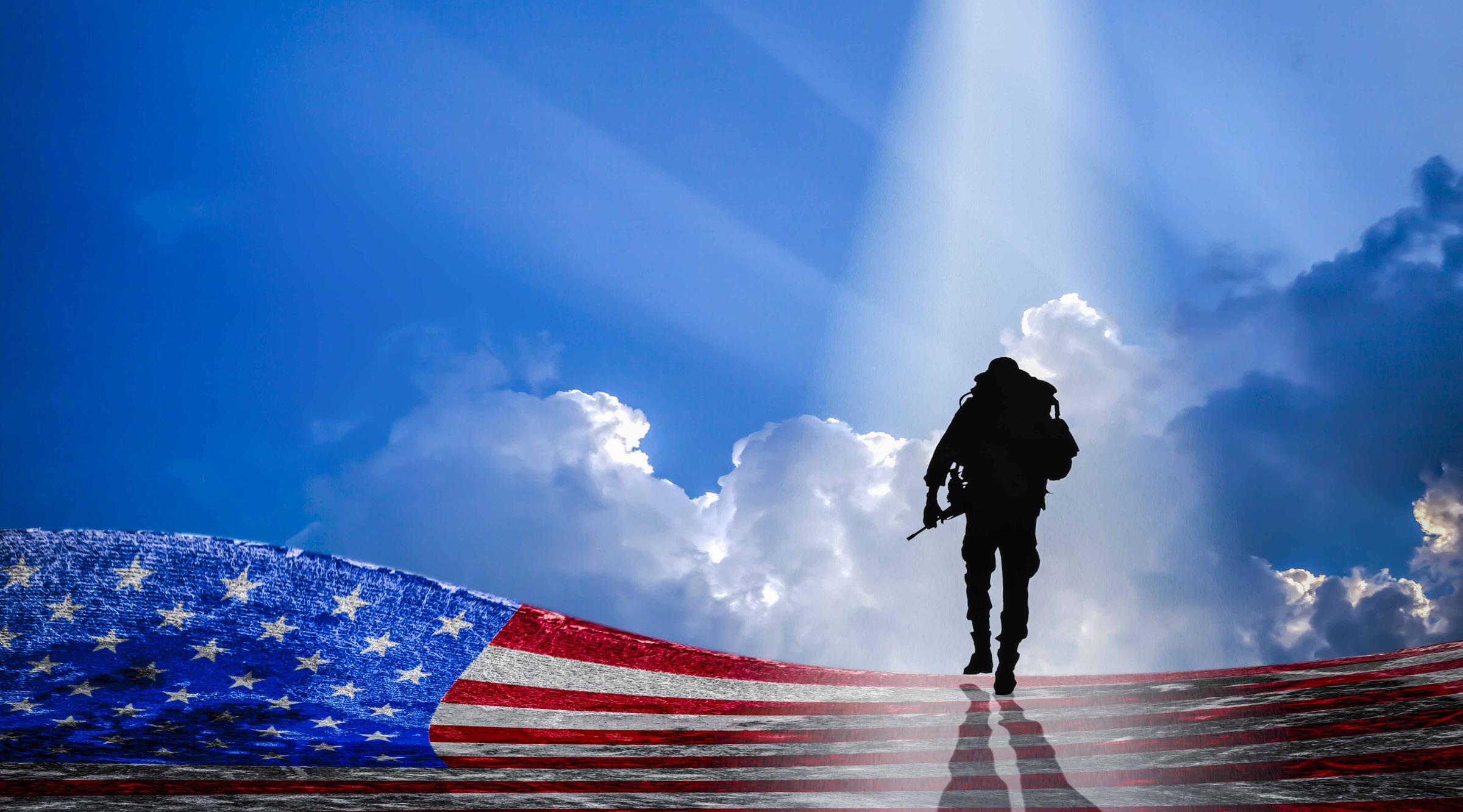
Veterans Day, a federal holiday that falls on November 11th, is designated as a day to honor the more than 21 million men and women who have served in the U.S. military.
It was first observed on November 11, 1919, as Armistice Day in honor of the first anniversary of the end of World War I, which officially ended on the “eleventh hour of the eleventh day of the eleventh month” in 1918. In 1926, Congress called for an annual observance of the anniversary and by 1938 it was an official federal holiday. A few decades later, in 1954, President Dwight D. Eisenhower officially changed the name of the holiday from Armistice Day to Veterans Day, as it is currently known today.
Thanks to the Uniform Holiday Act of 1968, the holiday was moved from its November 11 date to a less-defined “fourth Monday in October” so workers could enjoy a long weekend. However, this move didn’t last long. In 1975, President Gerald Ford returned the solemn day back to its original November 11 to honor the global historical significance of the day.
While it is important to thank all those who have served or are serving on a regular basis, on Veterans Day it’s especially important to take an extra moment to show military members gratitude for their sacrifice.
Memorial Day, which is celebrated on the last Monday in May, honors service members who have died in military service to the nation. The holiday has roots dating back to the post-Civil War era, when citizens would informally place spring flower memorials on the graves of fallen soldiers.
On May 20, 1868, over 5,000 first-ever National Decoration Day participants decorated the graves of the 20,000 Union and Confederate soldiers buried at Arlington National Cemetery. By the late 1800s, cities and communities across the United States began to observe the day and several states declared it a legal holiday. Over the next few decades, the day transitioned from being called Decoration Day to its current name of Memorial Day.
In 1968, Congress passed the Uniform Monday Holiday Act, which established Memorial Day as the last Monday in May instead of a set calendar day. By 1971, the threeday weekend for federal employees went into full effect.
Today, Memorial Day is often associated with the start of summer, discount sales and cookouts with friends. But you have the power to educate those around you and take a few moments to pay tribute to the fallen while still enjoying the sunshine and outdoors.
By Sinaiyah Emami
“Integrity first, service before self, excellence in all we do.”
This phrase can be seen on the core values page of the official U.S Air Force website. As a child of two Air Force Veterans, these values really hit home, because for me, those are not just words on a digital page… they are a way of life.
There is a sense of wonder and pride a child feels to have their active-duty parent(s) come home after a long day of work, in their uniform, knowing they were serving our country. On the other hand, there are no words to describe the loneliness and anxiety experienced when that same parent is deployed for months - or even years - at a time.

The life of a U.S military soldier can be unpredictable, but there is something that stays consistent through their service: sacrifice.
One day a year, America comes together to honor and recognize the men and women who have sacrificed and risked everything to serve our country. Veterans Day is a day of remembrance, but also a day of celebration. A day to thank all those who served.
Over time, Veterans Day has grown into more than just recognizing the service and sacrifice of Veterans; but to recognize their families as well.
The choice to serve our country is not an isolated one. It affects the individual as well as everyone connected to them - from mothers and fathers, to the spouses left at home caring for children while they are deployed. It affects the eldest child who must carry additional burdens in hopes to lighten the load of the parent

waiting anxiously at home. It affects the youngest children as they must navigate the uncertainty of life as their military parent comes and goes at different times. It affects brothers and sisters, cousins, grandparents - all those who may be needed to offer support when an injured Veteran requires extra assistance.

On this one day every year, we recognize the sacrifice and selflessness it takes to serve our country. To be a Veteran is to be selfless, but to be the family of a Veteran is to be resilient. This Veterans Day let us come together to honor the men and women who served with integrity and have put their lives on the line to protect our freedom, and may we also remember those who made the ultimate sacrifice so that we may be free.
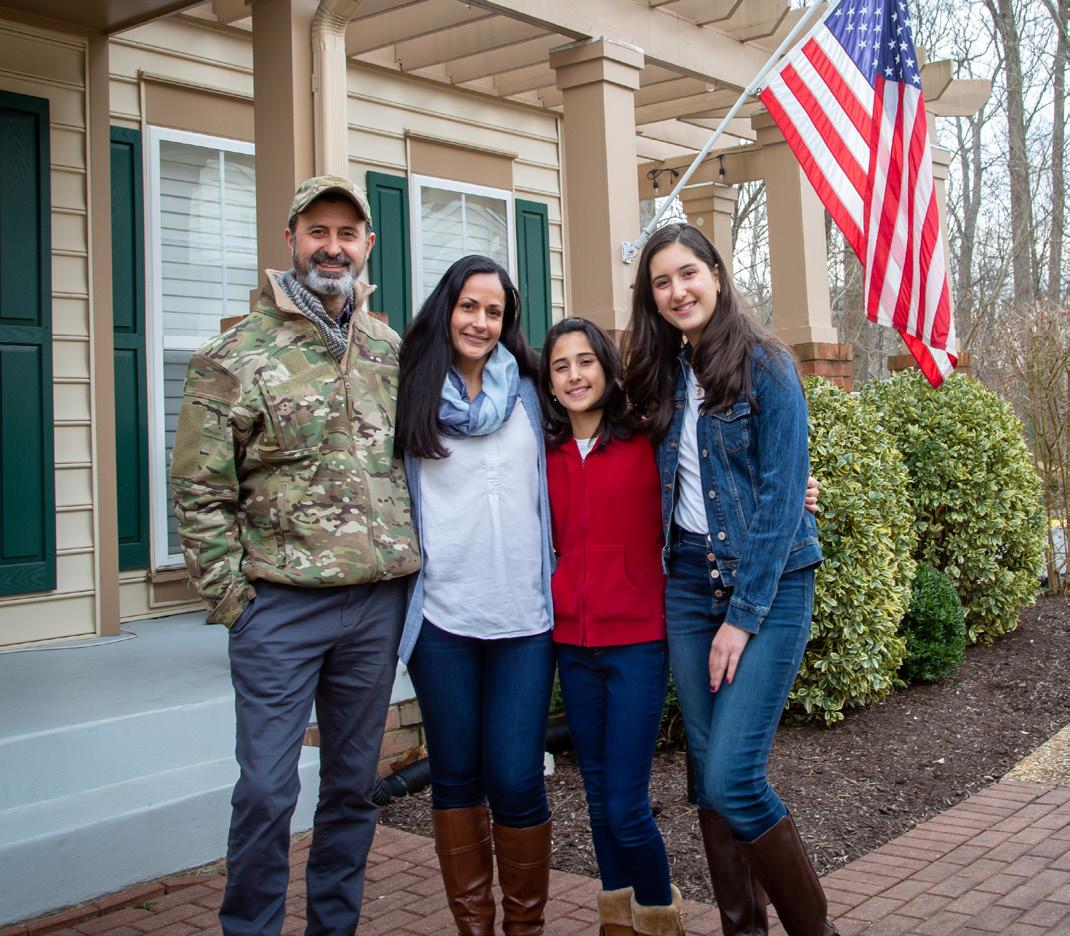
By Anna Griffin, Founder and CEO, Anna Griffin, Inc.
Veterans Day is a time for remembrance, gratitude, and honoring the people who have dedicated their lives to service. It is also a reminder that serving often means being far from home. Birthdays, graduations, weddings, and the little moments that make a family feel whole may all be missed in the name of duty. And the weight of that absence is something only those who have lived it can fully understand.
But even across borders and oceans, love finds its way through small acts of kindness. I am a great believer that there is nothing quite like the feeling of holding a handmade card, knowing that someone took the time to create something just for you. It carries the warmth of human connection in a way that nothing else can.
That belief is at the heart of why I started my company. I wanted to help people celebrate life’s most special moments, big and small, whether they happen in the same room or across the world. Every card we create is meant to carry kindness, to help people share their dearest wishes, and to remind someone near or far that they are loved.
I am constantly inspired by the care in our community at Anna Griffin, Inc. Every day, I see people using their creativity to connect with others in the most meaningful ways. Pamela Korte is one of those people whose generosity leaves me in awe. Every month, she handmakes 150 cards and sends them to military members stationed overseas. Each one is a work of art, layered with decorative papers, die-cut shapes, embellishments, and stickers. She leaves them blank inside so that service members can add their own messages for their loved ones back home.
For Pamela, this work is personal. Both of her parents served in World War II, and their example shaped her life in so many ways. They taught her to see the needs of others and to meet those needs with compassion. Pamela says that a handmade card speaks volumes about love and care, especially when someone cannot be physically present for an important occasion. A birthday or holiday card from a parent serving overseas, for example, helps make the miles in between feel a bit smaller. These cards are reminders that even in the hardest moments, love still finds its way.

What moves me most is how kindness like Pamela’s ripples outward. One person’s time and care have the power to touch so many lives. A card sent to a spouse, child, parent, or friend is often cherished for years. It becomes a symbol of that relationship in a nutshell. The act of creating it can give comfort to the sender, while receiving it gives comfort to the one waiting at home. This exchange becomes a virtuous cycle, where the love put into these cards continues to be passed on from one person to the next.
This is the power of crafting, the ability to turn a few simple materials into something that carries gratitude and connection. Veterans Day is a reminder that service is not just a sacrifice made by the few. It is a responsibility shared by all of us to care for those who give so much. Even the smallest gestures can make a difference for someone far from home. I encourage you to consider your own way of reaching out to a veteran or activeduty service member. Your act of kindness may be the reminder someone needs that they are never truly alone.
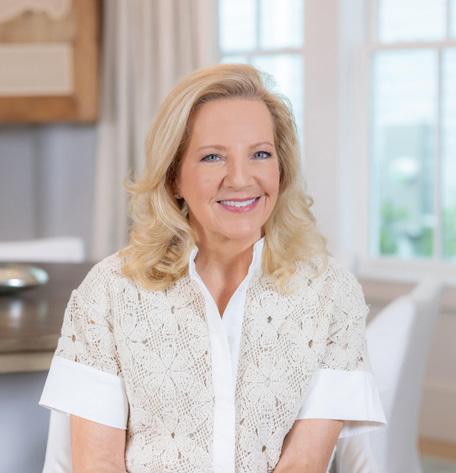
Anna Griffin, Inc. is an internationally known, high-end gift, stationery, and craft brand located in Atlanta, Georgia. For more than three decades, Founder and CEO Anna Griffin has woven creativity, connection, and beauty into the fabric of people’s lives. https://annagriffin.com
By Katie Lange DOD Historical Collection www.defense.gov
Thanksgiving is a hallowed American tradition filled with family, food, football and fun, but did you know we can attribute its creation largely to the military?
While conventional wisdom dates the first Thanksgiving back to 1621, when pilgrims in Plymouth, Massachusetts, joined in with local Native Americans to celebrate the fall harvest, it wasn’t a celebration that continued from year to year.
In fact, Thanksgiving didn’t really become any kind of tradition until we were trying to unify the nation during two of our biggest early struggles – the Revolutionary War and the Civil War.
During the revolution, the Continental Congress decided to declare several days of thanksgiving to help inspire our troops to victory. The first such day fell on Nov. 1, 1777, when news of some victories against the British reached their ears.
Gen. George Washington also called for a day of thanksgiving on Dec. 18,1777, as a victory celebration for the colonial army’s win during the Battle of Saratoga that October. He later issued the first
formal Thanksgiving Day proclamation for the U.S. when he was president, setting the date for Nov. 26, 1789.
While that date fell around that of our current-day holiday, Thanksgiving still failed to become an annual tradition until about 75 years later – when President Abraham Lincoln decided to renew the celebration in 1863, during the height of the Civil War.
Even as war raged across the country, Lincoln called for a day of thanks to be held on the last Thursday in November. The day would be known as Thanksgiving – and the tradition finally became official.
For many years, the presidents who came after Lincoln kept Thanksgiving on that final Thursday of the month. But during World War II, there were two years in a row in which November had five Thursdays, confusing a lot of people and causing a lot of arguments about which date Thanksgiving would fall on.
In 1942, Congress passed a resolution to clarify that every fourth Thursday of November would be Thanksgiving Day.

No matter where you’re celebrating Thanksgiving this year, know that the tradition grew out of your predecessors’ efforts to bring unity to the United States. We can all be thankful for that!
By Cynthia Weiss, Wounded Warrior Project
Eric Trinidad’s decision to join the military was deeply personal. After the loss of his cousin in the 9/11 attacks, he enlisted in the Army, determined to serve.
As a combat engineer, Eric faced constant threats from improvised explosive devices and gunfire. He sustained various injuries during his service, including a head injury in 2005. He also started having vision problems. But it would be years before the severity of his wounds would be discovered, and Eric would gain a renewed sense of purpose, structure, and community – a combination he credits with saving his life.
Born and raised in Puerto Rico, Eric grew up in a culture where seeking help was often stigmatized. This mindset shaped his journey as he tried to navigate challenges of post-military life.
“Growing up in a Hispanic background, you dealt with stuff yourself,” Eric explained, noting that mental health was not discussed. “If you had to talk to someone, you talked to your pastor, mother, or grandmother. Going to a therapist was unheard of.”
After returning from Iraq, Eric joined the reserves, enrolled in college, and became inspired by another Iraqi veteran he met at the local Vet Center to become a therapist.
Eric began his career as a veteran service officer. But while he helped other veterans, his health took a backseat. His vision worsened. He began experiencing severe headaches, which made it hard to read and focus. He struggled to manage his symptoms and his ever-changing emotions.
“Like other veterans, I tried to suppress everything,” said Eric, who was later diagnosed with post-traumatic stress disorder (PTSD). But still, he felt something was amiss.
“Coming back from the war, I wanted camaraderie. Being around veterans who understood me was my safe zone,” said Eric, who learned about the Wounded Warrior Project® (WWP) in 2009.
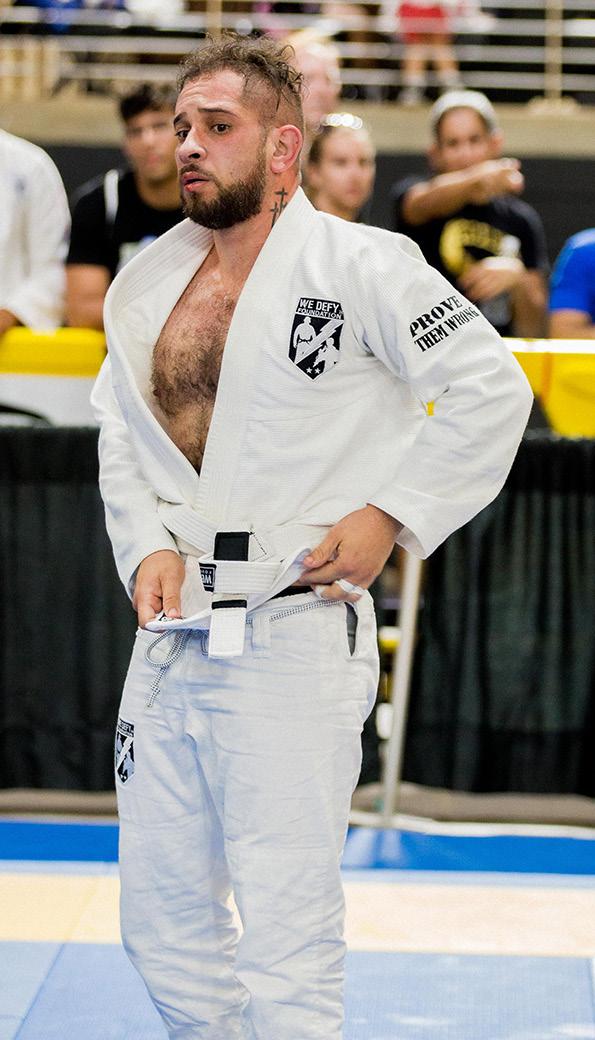
Although excited to meet people like himself, he was hesitant to engage. When he finally did, he knew he found his community.
“My first event was water skiing, and I was selfconscious. Then I looked over and realized the guy next to me had no legs.”
Over the years, Eric turned to WWP™ for connection and support, attending alumni events and using WWP’s Warriors to Work program to update his resume and find new employment.
When Eric realized he needed help managing the symptoms of his PTSD and, later, a traumatic brain injury (TBI), he once again turned to WWP for support.
By early 2012, though his body was in great shape, Eric’s brain was not. Increasing memory issues, attention challenges, and debilitating migraines plagued Eric. As his vision worsened, the more depressed he became. Suicide crossed his mind.
“I couldn’t remember what I had for breakfast, let alone try to pay bills. There was so much frustration because they didn’t have a label on it yet. I wasn’t even 30 years old, and I saw how fast I was deteriorating,” Eric said.

Finally – more than seven years after he left the military – someone put all the pieces together.
Eric’s symptoms were partly caused by his PTSD and partially by a traumatic brain injury he never knew he had. His vision issues were a result of the brain no longer communicating effectively with his optic nerve.
“The VA was just learning about TBI overlapping with PTSD,” he said. “If I had gotten treated for both of them earlier, I would have likely had a better outcome.”
Over the next few years, Eric focused on what he could control. He continued working and finding solace in the gym, which had always been a safe place to destress and help keep intrusive thoughts at bay.
“Working out was my release. I realized how I felt afterward. When I came home, I was relieved, sore, but it felt good,” Eric shared.“Despite working as a therapist, I still had my own demons to deal with. And working at [Veteran Affairs] at the time made it hard to get treatment because my psychiatrist was my colleague,” he explained.
The gym also served as a matchmaker. Eric met his wife, Ariana there. He took up powerlifting and won several titles. When he wasn’t at the gym, he traveled with his wife and enjoyed connecting with other veterans. Life was good, Eric said.

In May 2020, at the height of the COVID-19 pandemic, Eric was involved in a car accident, sustaining another TBI and numerous physical injuries. Eric spent five days in intensive care and required several surgeries, but due to COVID restrictions, his wife couldn’t visit.
When he came home, Eric required significant support. Simple things like cooking, bathing, and dressing required assistance. A spinal injury affected the sensation in his legs, making walking difficult and working out nearly impossible. Eric developed vertigo, a speech impediment, and began having seizures. The latest TBI also accelerated his vision loss.
The worst time came after he could no longer drive. “That was a hard pill to swallow. It was the most difficult time of my life. I was 39. My independence went out the window.”
Anger issues led to self-harm and depression to multiple suicide attempts.
“Everything turned upside down, and I didn’t know how to handle it,” Eric said.
Amid his pain, Eric found a second chance, thanks to Ariana’s persistence.
“She said, ’You need to put more effort in.’ She believed in me more than I believed in myself.”
Eric meditated and prayed. When cleared for physical activity, he tried golf, but it wasn’t love. He took up cycling and he and Ariana participated in Soldier Ride®, a multi-day WWP adaptive sports event.
Then he signed up for Brazilian jiu-jitsu, something he always wanted to try. Although nervous as he was now legally blind, Eric soon realized his vision wasn’t an issue.
“I did it two to three times a day, five times a week. The more I did it, the better my mood got,” Eric said, adding that he also found camaraderie with his fellow athletes – something he was missing after leaving the Army.
Jiu-jitsu also forced Eric to slow down and focus, which has helped improve his overall quality of life.
“Because I can’t see my opponent, I must calm myself down and rely on my other senses,” explained Eric. “I must think about all the possibilities because I don’t know what they will do. Things are constantly in flux during a match. Is he going left, right? My problem-solving skills are in play on the mat.”
Eric, who has achieved the rank of first-degree blue belt, credits jiu-jitsu with helping him regain physical strength and mental resilience, too. “Jiu-jitsu saved my life.”
After his accident, Ariana contacted WWP for support. She learned that Eric qualified for the Independence Program, which supports warriors with
injuries that significantly impact their independence, such as a moderate to severe brain injury, spinal cord injury, or neurological conditions.
One benefit is a personal coordinator who takes Eric to jiu-jitsu lessons. “Before, it was such a huge burden on my wife juggling work and driving me across town to lessons. Wounded Warrior Project has made it possible for me to train every week, which is agreat stress reliever and allows me to be more independent.”


WWP also helped Eric learn new ways to manage his PTSD and TBI symptoms. In late 2020, Eric participated in Warrior Care Network, an accelerated brain health program that helped him understand what happened to his brain and how to better handle challenges.
“I can’t erase my memories or emotions, but if things creep up, instead of lasting for days, it will last hours. I know how to cope and handle it now,” he said.
For the first time in years, Eric is excited about his future. Despite ongoing pain from the car accident, he feels heal thier than ever, both mentally and physically. He hopes to become a jiu-jitsu instructor and open an academy.

“My biggest downfall was not realizing it was okay to ask for help. I kept thinking, I went to war, I’m a therapist, I can handle this. I was wrong,” Eric admitted.“ Now, I’m able to see things outside my daily life with a different perspective. I have an amazing wife, people who care for me, and a great life.”

He wants other veterans to know that “no matter how tough the battle is, there is always a path to healing and triumph.”




For those who serve, sacrifice rarely ends when the uniform comes off. Veterans and first responders return from battlefields and crisis zones carrying more than their gear, they carry invisible scars of trauma, loss, and relentless stress. While their courage is celebrated publicly the battles they fight in silence often remain unseen.
The White Heart Foundation was created to change that. Founded with a mission to honor and heal those who have given so much, White Heart addresses the mental health needs of America’s warriors in a way few organizations do—through immersive, holistic retreats that blend evidencebased therapy with the restorative power of nature and community.
At the core of White Heart’s work is a weeklong mental health program designed specifically for veterans and first responders. Unlike traditional therapy held in clinical settings, White Heart takes participants into the healing landscapes of the western mountains, where open skies and shared experiences create space for renewal.
Participants engage in activities like whitewater rafting, rock climbing, horseback riding, and shooting sports, but these aren’t just recreational outings. Each challenge is structured to build trust, restore confidence, and encourage emotional openness. Combined with nightly group discussions around the campfire and guided peer support, the program becomes a powerful platform for transformation.
“We’ve seen lives change in just a few days,” says program co-founder Jed Morgan (USMC, Ret.).
“When veterans and first responders realize they’re not alone, and that others understand the weight they carry, it opens the door to healing.”
Chandra York, a Navy veteran and women’s trip leader, adds, “The recovery for mental health is not something that can be changed in one week, but one week in this program can set you on a completely different mindset and path.”

Continued on next page > Photos Courtesy of White Heart
One of the greatest barriers to care for both veterans and first responders is the stigma around mental health. For many, admitting to struggles with PTS, anxiety, or depression feels like weakness, a betrayal of the stoic image they’ve been trained to uphold.
White Heart Foundation works to break that stigma by creating an environment where vulnerability is not just accepted, but celebrated as a form of strength. The program fosters a sense of brotherhood and sisterhood, reminding participants that their identity as protectors and warriors is not diminished by seeking help.
Each evening, discussions begin with the root causes of pain and trauma, gradually shifting toward posttraumatic growth and the idea of turning pain into purpose. This “bottom-up” approach helps participants move from reflection to action, rediscovering strength through openness and connection.
While the retreats offer a week of intensive growth and recovery, White Heart’s mission doesn’t stop when participants return home. The Foundation emphasizes leadership development, equipping veterans and first responders with tools to strengthen relationships, lead with empathy, and find renewed purpose in their families and communities.
Workshops focus on resilience, communication, and post-service identity, helping participants redefine what service looks like after the battlefield or firehouse.
U.S. Army veteran Jesse Goble shares, “The White Heart Foundation showed me that I am more than just a number, I’m a person. I’ve been blessed to be part of an organization that helps veterans find freedom in the outdoors.”
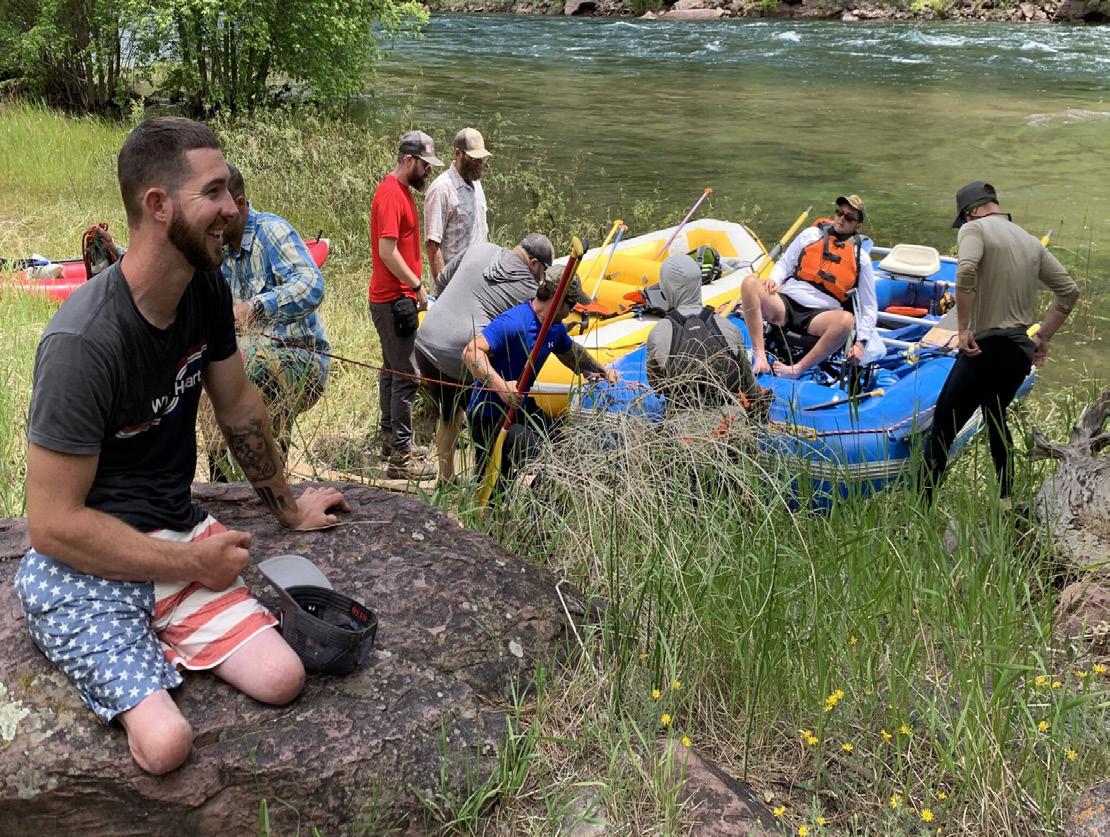



Powered by Generosity
White Heart’s retreats are provided at no cost to participants. This is made possible by the generosity of donors, corporate partners, and community supporters who believe in healing America’s heroes.
Every dollar raised goes directly toward hosting retreats, covering lodging, meals, therapy, and activities. In this way, donors don’t just give money, they give the gift of hope, resilience, and life-changing restoration.
Though each participant’s journey is unique, a common theme emerges: connection. Veterans who once felt isolated rediscover camaraderie. First responders who carried years of unprocessed trauma finally find release. Families notice new openness, renewed energy, and healthier relationships.
One firefighter described the experience this way: “I came here with walls so high I thought no one could climb them. But by the end of the week, those walls came down. For the first time in years, I felt like myself again.”
York adds, “White Heart has greatly impacted my life and has helped me work through my trauma while building a support system I’ve had for years.”
These stories fuel White Heart’s mission and affirm its belief that healing happens best in community.
As suicide rates among veterans and first responders continue to climb, organizations like White Heart Foundation are more critical than ever. The work being done through these retreats is not just saving lives, it’s helping men and women turn pain into purpose and positively impact the world around them.
Supporters are invited to stand alongside White Heart in this mission, by donating, volunteering, or simply spreading the word. Every contribution, no matter the size, directly impacts a veteran or first responder’s chance to heal.
To learn more about White Heart Foundation or to support the mission, visit www.whiteheart.org


Giselle Vallejo, MA, LPCC, Lead Clinician
The Steven A. Cohen Military Family Clinic at VVSD, San Diego www.cohenveteransnetwork.org
Dear Veterans,


At The Steven A. Cohen Clinics at VVSD, in San Diego, Oceanside and Los Angeles, we have had the privilege of connecting with so many of you, your families, as well as active-duty service members and their loved ones, each with your own story of courage, resilience, and commitment.
While we have the honor of supporting you through the services we provide, we recognize that we don’t always get the opportunity to express just how deeply grateful we are to serve you. Your strength and openness continue to inspire us every day.
As the year draws to a close and the holiday season approaches, we wanted to take a moment to pause and reflect on the incredible veterans that surround us. This season is a reminder of the importance of gratitude and of taking time to acknowledge the people and experiences that give our work meaning.
Below, each member of our San Diego clinic team shares a few words of thanks and appreciation for our veteran clients, family, partners, and community members. These messages come from the heart and reflect the collective gratitude we feel for all you have done and continue to do in service of others and in your own journeys of healing and growth.
- Thank you to our veterans and active-duty service members for their bravery – not just physically, and emotionally with the strength they show through their vulnerability.
• Leslie Amaya, Clinician
- Thank you for your hard work, dedication, and selflessness! I admire all that you’ve done and continue to do. Thank you!
• Jill Neufeld, Intern
- Thank you for sacrificing your time, for spending countless hours away from your family and friends, and for being so brave to do all the things you did. I appreciate you more than you will ever know and I am honored to bear witness in trusting us to be your true self. I am so proud of you, and I hope you feel the gratitude you deserve.
• Giselle Vallejo, Lead Clinician
- I would like to take this time to say how grateful I am for your service. I understand how challenging it can be to balance your time between family, life, and service in the military. Thank you for your service.
• Shawn Grant, Clinician and U.S. Marine Corp Veteran
- I am so amazed by your resilience, patience, and courage. It’s an honor to sit with you and hear about what you’ve been through, and I appreciate your willingness to show up and do the hard work. Thank you for your sacrifices and all you do!
• Julia McMullen Kharkar, Clinician
- Happy Veterans Day! I hope you are able to relax and take care of yourself after all the mental/physical/ emotional work you’ve done and continue to do.
• Kelly Finney, Clinician
- Thank you for your service. Thank you for your strength and endurance in all of the difficult times you may have experienced. Your braveness and strength does not go unrecognized.
• Paola Ramos, Billing Coordinator
- Thank you for all you’ve done for our country. Your contributions have made all the difference, even if you don’t see it right away.
• Kimberley Bradshaw, Front Office Billing Coordinator
- As a civilian, I have a deeper appreciation for this community’s sacrifice and what it means to be courageous. Being able to open up to a stranger and address personal things weekly is inspiring. It motivates me to be there for them every session.
• Carlos Cantu, Fellow
- I am deeply grateful to all who have served our country, but I am especially grateful to my husband. As a military spouse, I witnessed firsthand how he gracefully balanced the demands of military life with the responsibilities of family life. After long days of service, he was always intentional about his evening transition, shifting from Marine to husband and father with care and presence. I am profoundly thankful for his unwavering support, his love of our country, his dedication to service, and, most of all, his love for our family.
• Shuna Ball, Regional Clinic Director, U.S. Navy Veteran and Military Spouse

We encourage you to connect with us at one of our clinics for mental health support by visiting vvsd.net/cohenclinics or utilize our free, online Tools for Stress and Worry by visiting cohenveteransnetwork.org/tools-for-stress-and-worry

By: Robert ‘Bob’ Cuyler, PhD Psychologist and Trauma Expert


As if the distress wreaked by post-traumatic stress isn’t enough, the pain is compounded by factors both in society and well as within individuals. There are some heartening signs that stigmatizing attitudes regarding PTSD have softened in recent years, in part, because it is increasingly acknowledged as a civilian as well as a military condition. The pandemic’s widespread traumatization led to new awareness that none of us are immune from the impact of terrible events. Still, while veterans are routinely thanked for their service, some problematic attitudes about the effects of trauma persist within both military and civilian cultures. Strength, the ability to tough it out, self-reliance, and the commitment to put one’s life on the line for country and peers - these important values of military culture, unfortunately, don’t prepare soldiers well for the consequences of trauma. An additional factor is that many activeduty members may avoid treatment for fear that revealing their condition may affect their careers. Beyond the external factors of societal stigma and threat to career, some characteristics ‘on the inside’ complicate PTSD. Two important characteristics are termed ‘Trauma-related guilt’ (TRG) and Mental Health Self-Stigma (MHSS). These factors are seen in the research literature as related to PTSD severity as well as reluctance to seek help or treatment dropout.
Let’s first address trauma-related guilt. Militaryrelated trauma, particularly for those who served in combat, readily provokes TRG in the witnessing of harm to others, the belief (rational or irrational) that harm could have been prevented or minimized, and moral injury (belief that one either did or failed to do something in violation of one’s values). As a consequence, this guilt can lead individuals to believe that they deserve their distress and should be punished rather than helped.
Mental Health Self-Stigma referrers to a cognitive process in which individuals internalize stigmatizing attitudes, including the following: veterans with PTSD
are damaged, volatile, unpredictable, unable to adjust to civilian life. These attitudes worsen PTSD symptoms and increase risk of the condition becoming chronic. MHSS often leads to demoralization where the motivation to seek help or believe that relief is possible shrinks away.
The shift toward health and recovery fundamentally involves challenging the belief that one is weak, responsible for the pain, and deserving of punishment. In our experience treating over a thousand veterans, we’ve seen all these struggles, but we’ve also seen recovery. Taking the first step in seeking help is hard, and so it sticking with it even if you are a) skeptical that anything can help you, b) initially believing that you don’t deserve relief, or c) persisting even when results are not immediate.
PTSD is not weakness or a moral failure, it’s an injury, an invisible injury. Guilt is a haunting emotion, but it can be processed and healed despite inner beliefs that guilt must be punished. Self-stigma can dissolve if you regard yourself with the compassion you extend to others.

Veterans have faced many challenges, and we encourage those affected by PTSD to take the challenge of seeking relief, both for yourself and for those you love.

Dr. Cuyler is chief clinical officer of Freespira, an FDA-cleared non-medication treatment that helps people with panic and PTSD manage their symptoms by learning how to regulate their breathing. www.freespira.com
“I am shocked and surprised that this treatment worked. When I think about PTSD, I think about the brain and this being a brain problem… There is no denying the calming effect this treatment had on me. This has made a significant difference in my personal life. This treatment is remarkably effective.”
—
Kevin, US veteran whose symptoms included social anxiety and monthly panic attacks before he found Freespira

They’re signs of impact. At Freespira,




By Lt. Cmdr. William Reynolds, USN, (Ret.), PA-C

Military personnel face significant mental health challenges, including post-traumatic stress disorder (PTSD), depression and substance use disorders. In 2022, approximately 17.6% of active-duty service members sought treatment for psychological health concerns. Servicepeople, though, often encounter significant stigma when seeking mental health treatment. This stigma, deeply rooted in a military culture that emphasizes resilience and self-reliance, leads many to perceive seeking help as a sign of weakness. It takes tremendous courage to ask for help, but recovery is possible, and veterans and military personnel do not need to live with PTSD symptoms.
The military emphasizes the importance of mental readiness and resilience, recognizing that untreated mental health issues can adversely affect an individual’s performance as well as military unit cohesion. The Department of Defense has implemented policies to encourage mental health care while minimizing career repercussions. The Brandon Act, for example, was enacted in May 2023 and aims to improve access to mental health services, encouraging early intervention and allowing service members to seek help confidentially without fear of negative career impacts.
Residential mental health treatment provides a structured, 24/7 environment for individuals requiring intensive care beyond outpatient services. These programs incorporate therapies addressing trauma and stressors specific to military service and are tailored to the unique needs of those whose lives have been disrupted by various mental and behavioral health concerns. This comprehensive, personalized approach aims to equip service members
with coping strategies and support systems, facilitating their return to duty or transition to civilian life.
It’s also important to look at underlying physical comorbidities. Some programs, like the Sierra Tucson Red, White, and Blue Program, start with a physical examination complete with appropriate lab work which is essential to identifying physical issues that may mask as psychological problems. Hypothyroidism, for example, often presents as depression.
Recognizing the existence of a mental health problem is a crucial first step toward successful treatment and recovery. Denial often serves as a barrier, preventing service personal from recognizing the severity of their condition and ultimately delaying the necessary help. By confronting the reality of their struggles, military members can move beyond denial and open the door to therapeutic support systems. Acceptance also enhances the effectiveness of treatment by increasing an individual’s commitment to the recovery process. When veterans and military personnel acknowledge their problems, they are more likely to participate actively in therapy, adhere to prescribed treatments, and implement coping strategies. Plus, this acknowledgment also plays an important role in reducing the stigma associated with mental health and addiction issues.
For additional resources, active duty and veteran members of the military are encouraged to visit: the National Center for PTSD (www.ptsd.va.gov), Military OneSource (www.militaryonesource.mil), and the U.S. Department of Veterans Affairs Mental Health websites (www.mentalhealth.va.gov).
PTSD is a diagnostic code that the healthcare industry uses, but the word “disorder” in Post Traumatic Stress Disorder stigmatizes a very normal, human response to abnormal situations. PTSD has also been with us since the invention of warfare. Fortunately, with advances in mental health care, treating this potentially debilitating condition is highly effective. There is hope for active duty and military veterans to return to living well in recovery.
Lt. Cmdr. William Reynolds, USN, (Ret.), PA-C, is Director of the Military and First Responder Trauma Recovery Program at Arizona-based mental health treatment facility Sierra Tucson.

For more information, visit: www.sierratucson.com/programs/military
MISSION ACCOMPLISHED



Sergeant Andrew Poulsen (U S Army, Ret ) he’d been on three Afghanistan tours rising from artilleryman to PSYOPS Sergeant, fluent in 7 languages carrying the weight of a combat acquired disability rating He had faced enemy fire, stage three cancer, and now forced to live in his truck bed with a Phoenix heat index of 110 degrees. But his toughest battle? Watching his wife and young children suffer alongside him, unable to cover shelter with his disability pay When he called for help? It would be ten weeks before a family shelter could accommodate them. They wouldn’t make it.
We don’t stop at the crisis. We stay with the veteran until the situation is resolved because no veteran should ever be left behind.
MACV Foundation responded immediately. Partnering with Commissioner Chuck Byers of the Arizona Department of Veterans Services and the Military Order of the Purple Heart in Apache Junction, the foundation secured emergency hotel accommodations to get the family out of the heat.
Over the next several weeks, MACV case-managed the situation directly helping the family navigate services, advocate for support, and meet every challenge halfway with effort and resolve.

Within 7 weeks, the Poulsen family moved into a safe, two-story home provided by the Supportive Services for Veteran Families program.

- Veterans & Military Spouses in Public Education
- What’s Next: On the March Home
- Veterans Day and Career Transition Readiness
- Transition and Careers in Cybersecurity
- Mentors Help Veteran Entrepreneurs Thrive
- Veteran Entrepreneurs Helping Fellow Veterans
- The Secret San Diego Doesn’t Know About
- Common Mistakes in Employee Handbooks
- Veterans in Business: The 11th Hour
- Veteran Networking Groups
- Risky Business: Cyber Hacking
- Careers in Law Enforcement


For editorial & monthly columns regarding transition, career advice, tips, workshops, transition to education, entrepreneurship, straight-forward legal tips for military and veteran business owners and more, visit Veterans In Transition.
www.homelandmagazine.com/category/veterans-in-transition

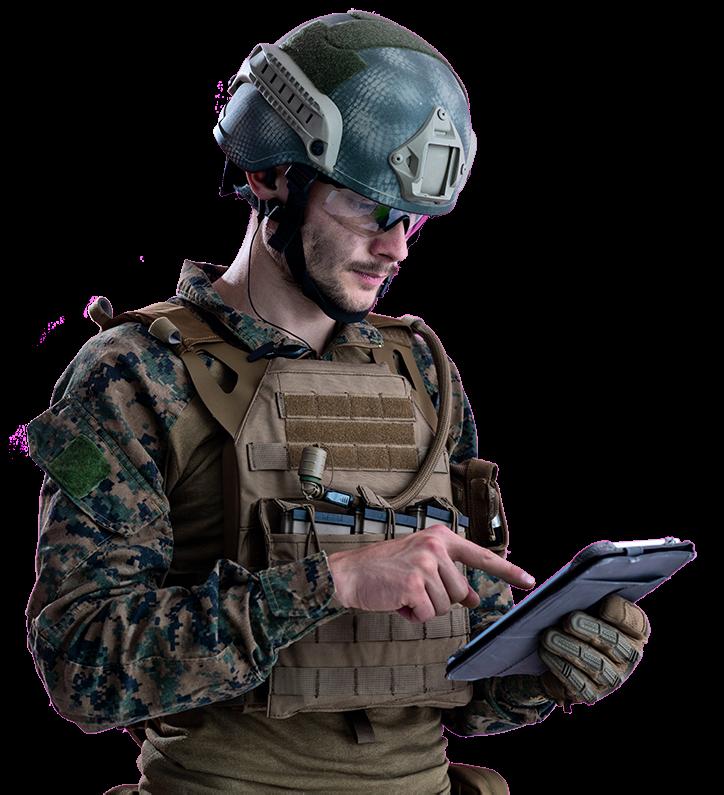


Earn Your Degree Anytime, Anywhere. Flexible, Affordable, and 100% Online!*
Military life comes with constant changes—deployments, PCS moves, and unpredictable schedules. But your education doesn’t have to wait. At Los Angeles Pacific University, we understand the unique challenges military members, spouses, veterans, and dependents face. That’s why our fully online programs offer the flexibility you need to study at your own pace, no matter where life takes you. Whether you’re on base, deployed overseas, or at home, your degree moves with you!
• 100% Online & Flexible: Learn from anywhere, on a schedule that fits your life.
• Maximize Your Benefits: Use GI Bill®, tuition assistance, and spousal benefits.
• Earn Credit for Your Experience: Take advantage of CLEP, DSST (DANTES), and AARTS/JST to turn your military training and knowledge into college credit.
• Fully Accredited: LAPU offers fully accredited associate, bachelor’s, and master’s degrees through the WASC Senior College and University Commission (WSCUC).
• Faith-Based & Supportive: Dedicated military-friendly success coaches who care about your journey.
Your Future Starts Today! Take the Next Step



*At this time, LAPU is unable to offer distance programs or courses to students residing in the following states and districts: Alabama, Arkansas, Connecticut, the District of Columbia, Indiana, Kansas, Maryland, Minnesota, New Mexico, New York, North Carolina, Oregon, Wisconsin, and Wyoming. LAPU Voted #1

Military Friendly School & Spouse School


By Dr. George Ann Rice Patriots to Education
When veterans hang up their uniforms, or when military spouses finally settle in one place, their desire/their mission to serve doesn’t end—it can simply transform. Across the nation, thousands of miliary-related people (including military spouses, the National Guard and Reservists) are discovering that public education offers the perfect place to continue that calling. In classrooms, cafeterias, front offices, shops, school buses, IT, etc., they are finding purpose, community, and fulfillment that feel remarkably familiar.
For many who’ve live a life of service, education provides the opportunity to keep giving back—this time to the next generation. Veterans bring integrity, discipline, and teamwork to their roles, while military spouses contribute resilience and adaptability earned from years of navigating deployments and relocations. Together, they form a powerful force for stability and inspiration in schools and support locations.
In education, every effort has a visible result. Veterans and spouses can literaly see the diference they make in the classroom—whether it’s a student who finaly masters mulitiplication, a teen who finds direction, a classroom that learns the value of respect and perseverans, a busload of children who get to school safely, a school that is kept safe, heating and cooling system that function so children can learn, etc.
After years of uncertainty, education offers something deeply valuable: stability. A consistent schedule, community connections, and a clear path for growth all help veterans and spouses build long-term fulfillment. For many, a school becomes their new “unit,” a place where camaraderie, shared goals, and daily purpose thrive.

From teaching and counseling to administration and operations, the education field provides a wide range of roles and advancement opportunities. Professional development, mentoring programs, and leadership pathways allow veterans and spouses to keep growing while using their unique strengths to lift others.
Military life cultivates strengths every school relies on: leadership, problem-solving, accountability, and empathy. Veterans are accustomed to structure and team work, making them natural leaders in the classroom and beyond. Milary spouses, who often manage change and challenge with grace, bring exceptional organization and communication skills. These qualities elevate school culture and student success alike. These same skills plus skills learned to do military assignments are needed in administrative, school safety, social services, school nurse, OTs, PTs, bus drivers, operations, etc.
At its heart, education is service—an act of building, protecting, and empowering the future. For veterans and military spouses, it’s a mission that feels familiar yet profoundly new. Each lesson taught, bus route driven, or student supported becomes another way to serve the nation—one child at a time.
In America’s schools, veterans and military spouses are proving that their greastest contribution might not come from the battles they’ve fought—but from the lives they continue to shape.
To learn more, visit our website www.patriotstoeducation.org
Follow us on Instagram@patriotstoeducation




By Eve Nasby eve@infused.work


As we celebrate Veteran’s Day we are reminded as a nation to pause and thank you. Not only thank you but thank your family as well. Without this pause, the average American goes about their day taking for granted your service to this great nation. Veteran’s Day is for you.
You've marched long beneath the banners of duty. You've stood watch in darkness so others might sleep in peace. You've followed orders, endured separation, learned the discipline of body and spirit. Now, as you transition out, a different summons calls—not to arms, but to peace. It’s time to lay aside the uniform and take up another kind of service: living well in the world you defended.
Don't mistake this new mission as lesser. It's different, that's all. The battlefield of the soul is every bit as real as any field you've known. The courage that carried you through your darkest nights in the military must now face uncertainty, confusion, change.
In war and duty, identity gets handed to you: the name stitched on your chest, rank on your sleeve, the creed you live by. Noble things—but not the whole of you. When the rank is gone, when no one salutes, when your orders no longer echo through the halls—you remain.
What endures when the uniform comes off? Character. Integrity. The unseen strength that served you when no one was watching. The same discipline that kept you alive will keep you grounded now.

Don't mourn the loss of rank or title. You will have the opportunity to create a new path using the skills learned and the virtue forged by your military career. Your future employers will benefit from the crucible you have endured. Remember, the one who governs himself is mightier than the one who commands legions. This integrity, grit and commitment is often missing in average employees today.
To the Spouse: The Keeper of the Homefront
We often focus on just the warrior in transition, but spouses also are to be recognized and heralded. You've shown a quiet kind of valor—unseen by parades, unpraised by medals. You carried the weight of absence, raised children in the shadow of uncertainty, became the steadfast center when everything else was chaos.
Now, as your warrior returns, the mission changes for you too. The home you kept alone must be shared again. There'll be friction—between the soldier who once led troops and the partner who led the home. Remember: neither role was small.
Meet this new season with patience, not fear. You can't command healing or rush understanding. Speak gently. Listen as one who has also endured war—because you have. You're returning home too. Veteran’s Day is for you as well. This is a a day for you too to be recognized and thanked for holding down the homefront as your beloved served the nation at large.
This may be an obvious word of encouragement, but let love lead, not pride. The devotion that carried you through deployments will carry you through this new campaign of adjustment and grace.
To the Warrior: The Mission Continues
You might think the mission has ended. It hasn't. The uniform changes, but the duty remains—to live with honor, to lead with humility, to serve without fanfare.
The world beyond the gate doesn't give clear orders. No daily briefings, no battle rhythms, no visible ranks. You'll find chaos in its own way. Yet the same principles that served you under arms will serve you here: wake with purpose, do the next right thing, treat others with the loyalty you gave your brothers and sisters in arms.
Some days you'll miss the simplicity of command, the closeness of the unit, the clarity of a mission. The civilian world may seem indifferent or unaware of what you've done.
Don't let that embitter you. Don't seek applause—seek meaning. Remember, you didn't serve for praise; don't live for it now.
What’s next? Build a new unit: your family, your community, your circle of influence. They need your leadership morethan you know.
To the Children: The Watchers of Courage
We’ve touched on the impact on families in the past, but they too are in transition when Mom or Dad finally come home. Children, you've been brave in ways you don't yet understand. You learned to say goodbye with a smile and count days until return. You've seen strength and sacrifice—both in your serving parent and in the one who stayed behind.
Now you'll see another kind of courage—the courage to begin again. Your family's life will change: new schools, new homes, new routines. But the same love that held you together across oceans will hold you together still.
Your parents' service was for freedom. Now you must use that freedom well—be kind, be responsible, serve others. That's how you honor their uniform. Veteran’s Day is for you too.
The greatest victories aren't won with weapons, but with wisdom. The fiercest battles aren't fought abroad, but within—against bitterness, pride, fear, regret.
Be proud of all that you have accomplished. Leverage the experience you received while serving. Connect with organizations designed to help you with next steps and as you hear this Veteran’s Day, “Thank you for your service.”, know that what you did really mattered. Yes, there may be silent, still and uncharted days ahead- you will prevail again. Don’t curse the current, trust it. You are still on mission; the theater has changed. Hold fast to your virtues and to your integrity. Lead with compassion, serve with humility and when you doubt your worth remember this: the uniform may come off, but the soul of the warrior never does.
Happy Veteran’s Day, and Thank You for your service to this great nation and to my family.

Finding a job in the civilian workplace may seem easy at first. After all, you have learned skills, practiced leadership and demonstrated initiative that will make you successful wherever you go.
The reality, though, is that it can be difficult. In fact, it can be downright depressing demotivating and you may feel totally disillusioned. We can help.
In our Veterans In Transition archives you will find helpful and informative articles about what’s next in transition, veterans in business, career, advice, tips, workshops, transition to education, entrepreneurship, veteran franchises, legal tips & resources for veteran businesses and much more...
For assistance in your journey please visit: HomelandMagazine-Veterans-In-Transition homelandmagazine.com/category/veterans-in-transition
Need help with your transition? Reach out to Eve via LinkedIn or email eve@infused.work www.linkedin.com/in/eve-nasby-given-hiring-expert
By Paul Falcone PaulFalconeHR.com
What better way is there to celebrate Veterans Day than by acknowledging the service and sacrifices that our veterans have made not only during their military years but throughout their lives? The transition to the civilian sector after your military service has concluded is nothing to fear: it’s simply the next mission—a chance to apply your elite skills to a new domain.
CEO surveys reveal that certain qualities and skills work best in today’s business environment: leadership, communication, teambuilding, accountability, agility and change readiness, innovation and creativity, and emotional intelligence all rank among the highest traits and qualities valued by U.S. CEOs. Your military training prepares you well to excel in these areas. You’re also well prepared to benefit from talent shortages in the private sector where hiring veterans makes good business sense.
First, talent scarcity plagues all industrialized nations, not just the United States. Baby Boomers—the generation that grew out of World War II—were at the time the largest generational cohort in U.S. history. Ten thousand babies per day were born in America between 1946 to 1964, totaling seventy-seven million people. However, no one paid much attention to this generation’s exit trends: from 2011 to 2029, ten thousand people transition into retirement every day, with the Baby Boom fully exiting the workforce in 2031 (for those working to age 67). Read that: the Baby Boom will fully exit the workforce in the next six years.
Next challenge: the Baby Boom was followed by the “Baby Bust,” or Gen X, which was only roughly half its size (around forty-four million). The introduction of the birth control pill in 1964 put a swift end to the Baby Boom. Further, young Boomers have been exiting the workforce in record numbers since the Covid pandemic subsided—many retiring early, opening their own businesses, or relocating overseas.


The talent scarcity that’s resulting as part of these huge demographic shifts makes hiring veterans all the more crucial for employers.
The AI revolution will surely mitigate and offset the talent scarcity facing many U.S. companies. And periods of high unemployment and corporate downsizing will “let some air out of the tires,” so to speak, alleviating the pressure to find qualified talent to do the work. Still, while the current job market as of this writing is looser than it’s been over the past few years (i.e., the hiring demand has cooled down), it’s a critical time to hone your leadership brand, technical know-how, and discipline to provide solutions to employers’ needs in light of these larger macro trends.
Explaining your military responsibilities to a private sector employer takes a bit of investment on your part. Don’t expect civilian managers to understand how your military work transfers directly to the workplace. There are a number of military-to-private-sector career dictionaries that help you translate your roles and responsibilities into civilian terms. Just remember that tweaks to your vocabulary and concrete examples will help you bridge the gap between your military and private sector experience. For example:
• Leadership/Command: Project management, team leadership, crisis management, strategic planning.
• Operations/Logistics: Supply chain management, process optimization, resource allocation, customer care.
• Training & Instruction: Corporate training, instructional design, mentorship.
• Soft Skills: Discipline, adaptability, integrity, performance under pressure.
Pay special attention to the last bullet on soft skills: now commonly referred to as “emotional intelligence,” soft skills include self-awareness (understanding your emotions), self-management (the ability to regulate and control your emotions), social awareness (being attuned to others’ emotions/demonstrating empathy), and relationship management (the ability to navigate social
interactions effectively and build and maintain positive relationships). CEOs see this as a critical priority, especially when remote work is involved (since they can’t directly oversee their employees’ work).
It’s reasonable to expect civilian interviewers to question your understanding of the challenges you’ll face transitioning into the private sector, especially if this will be your first role outside the military. Be prepared to structure your interview responses according to:
• Cultural Shift: the difference between the military's structured, hierarchical culture and the often less formal, consensus-driven private sector.
• Achievement Mindset: demonstrate how you focus on accomplishments and results using the STAR method (Situation, Task, Action, Result), rather than just discussing duties.
• Networking: Stress how much you value building a civilian professional network, especially via LinkedIn and your commitment to exploratory interviews.
• Identity Loss and Purpose: Acknowledge that leaving a life of service can cause a feeling of lost identity or purpose. Suggest finding purpose in the civilian world through company mission, volunteer work, or mentorship.
Understanding why qualified veterans are needed in the private sector, how to translate your abilities by focusing on CEO priorities, and being prepared to interview with purpose and self-awareness will help you launch a successful transition. Building your selfconfidence in the transition process will be the best Veterans Day gift you could give yourself and likewise give away to others in a spirit of selfless leadership.

You can connect with Paul on LinkedIn at www.linkedin.com/in/paulfalcone1
Paul Falcone (www.PaulFalconeHR.com) is a management trainer, executive coach, and bestselling author on hiring, performance management, and leadership development.

www.HarperCollinsLeadership.com

Homeland Magazine sat down with Chris Simpson, the Director of National University’s Center for Cybersecurity. Chris is a recognized leader in cyber defense education and cyber workforce development.
Homeland: During your time in the U.S. Navy, what were your main roles and responsibilities?
Chris: My most significant responsibility in the Navy was serving as an Air Intercept Control Instructor at TOPGUN, the Navy Fighter Weapons School. In this role, I taught the fleet's top controllers advanced tactics, techniques, and procedures for translating complex sensor data and engagement geometry into the splitsecond decisions that guide pilots through combat engagements. This role represented the pinnacle of my 20+ year Navy career, which began as a deck seaman and culminated in my retirement as a Lieutenant Commander.
The early part of my career focused on operational planning, data links, and air intercept control. After getting commissioned as a limited duty officer and completing a bachelor's degree in Computer and Information Science, I became interested in information assurance and transitioned to the Navy Information Professional community. After this transition, I held various assignments as Information Assurance Manager, Information Systems Security Manager, and C5I Officer for an Expeditionary Strike Group.
Homeland: How did you arm yourself with information and find the support you needed when transitioning from military service to civilian life — especially when it came to going back to school or figuring out where to turn for guidance?
Chris: My path was a bit different from many veterans. I finished my associate's degree while stationed at TOPGUN, earned my bachelor's degree in Computer and Information Science after my first tour as an officer, completed my master's degree in Information Security and Assurance from George Mason University during a shore duty tour, and I'm currently pursuing my doctorate at National University.
Balancing family life, work, and education was challenging but incredibly rewarding. Now, as an educator who works with students in similar situations, it helps me understand where they come from. I can design content that supports their learning and helps
them accomplish their goals. When planning my college career, I took advantage of Navy career counseling and education services. I highly recommend these resources to all service members.
Homeland: Did you experience any pitfalls coming out of the service?
Chris: I was fortunate to have a great transition from military to civilian life. My first post-Navy job was teaching knowledge management for the Navy, which provided good continuity. Moving into academia required some adjustment. While you do have compliance rules and regulations to follow, there's much more decision-making by committee. There's also greater flexibility through academic freedom, which allows you to approach problems and course design in ways that aren't always possible in a more structured military environment.
Homeland: What inspired you to pursue a career in cybersecurity education?
Chris: Throughout my Navy career, I spent years training and teaching, instructing elite air intercept controllers at TOPGUN and mentoring junior officers in tactical operations. When I discovered cybersecurity through Clifford Stoll's The Cuckoo's Egg and the NSA's Rainbow Series (particularly the Orange and Red Books), I recognized the same pattern-recognition and rapid decision-making skills I'd taught in air warfare: processing data streams, tracking multiple threats, identifying anomalies. Cybersecurity education became the natural intersection of my passion for teaching and this fascinating new field.
Homeland: Why did you choose to work for National University?
Chris: I've always enjoyed teaching and training, with various Navy assignments including TOPGUN. A couple of things brought me to National University. First is the awesome full-time and part-time faculty team. They're hardworking, dedicated people who are genuinely invested in helping students succeed. Additionally, I love working with working adults and helping veterans start new careers in the exciting field of cybersecurity. Seeing someone transition from military service into a thriving cybersecurity career is incredibly rewarding. The university's mission aligns perfectly with what I'm passionate about.

Homeland: Why are military veterans uniquely suited for careers in cybersecurity?
Chris: Veterans are uniquely suited for careers in cybersecurity. They're detail-oriented, a critical skill when the smallest mistake can allow an attacker into a system. They're equipped to handle intense, highstakes situations. Most military jobs involve operating complex equipment or information systems, and veterans have gained valuable leadership and project management skills.
Veterans typically have strong technical aptitude because they've worked with complex technology throughout their service. Whether they were operating vehicles, flying aircraft, maintaining equipment, or using sophisticated communication systems, they've gained hands-on experience that translates directly to cybersecurity. Even if they don't come from what the military classified as a technical specialty, those foundational skills transfer incredibly well.
Homeland: What advice would you give to transitioning veterans who are looking to pursue education or translate their military skills into cyber careers?
Chris: Education is a journey. As you begin your cybersecurity education, relate hands-on and apply learning to theoretical knowledge. Many of the applied tools and equipment will change, but the fundamentals will not change.
Remember that education is more than just completing assignments. It's about gaining a deep understanding of specific subjects and topics in your field. In today's fast-paced world, many forget the importance of deep reading.
Finally, one of the best things about going to a university is the great faculty you get to work with. They're a great resource for learning and career advice. Take advantage of your time in university to build hose relationships and learn from their expertise.

Chris Simpson, Director of National University’s Center for Cybersecurity. For more information on National University and cybersecurity, vist www.nu.edu

Finding a job in the civilian workplace may seem easy at first. After all, you have learned skills, practiced leadership and demonstrated initiative that will make you successful wherever you go.
The reality, though, is that it can be difficult. In fact, it can be downright depressing demotivating and you may feel totally disillusioned. We can help.
In our Veterans In Transition archives you will find helpful and informative articles about what’s next in transition, veterans in business, career, advice, tips, workshops, transition to education, entrepreneurship, veteran franchises, legal tips & resources for veteran businesses and much more...
For assistance in your journey please visit: HomelandMagazine-Veterans-In-Transition homelandmagazine.com/category/veterans-in-transition
Meet three mentors who volunteer their time and expertise to help veterans thrive as entrepreneurs


By Elizabeth DePompei
Game changers. Cheat codes. Fail-safes. That’s how entrepreneurs and business leaders describe the mentors who helped guide them through the often daunting and lonely journey of founding a business.
The value of mentorship is exponential for founders in the military and veteran community. While their entrepreneurial peers went to business school and learned firsthand from corporate leaders, men and women in uniform—and the spouses who support them—dedicated those years to their country. That sacrifice is why DAV Patriot Boot Camp offers no-cost education and one-on-one mentorship through three-day cohorts held throughout the year. Program mentors are volunteers, and many say they get as much from the experience as the founders they mentor. Meet three of them, and learn how you can become a program mentor or mentee.
Learn more about DAV Patriot Boot Camp opportunities and sign up for our newsletter at patriotbootcamp.org. Mentors don’t have to have served to serve those who did.
Former Army Ranger David Reid is the co-founder of Terra Arma, a high-end, hard-use apparel brand. It’s a venture he took on in large part because of the man he calls his No. 1 mentor—acclaimed chef and entrepreneur Robert Irvine of Food Network’s “Restaurant: Impossible.”
“He’s exposed me to a world that I never knew was possible,” Reid said, noting that post-military career options can feel limiting. Through Irvine, he witnessed the potential and reward of business ownership and how to succeed.
Now, one of Reid’s biggest pieces of advice for founders is to latch onto a mentor—and that could be him. He and Irvine volunteer as mentors for DAV Patriot Boot Camp.
“I find it to be an incredibly rewarding experience,” Reid said. “The best way to learn is to teach.”
For Reid, Irvine has also set an example of how to mentor others.
“He wants to help wherever he can,” Reid said. “The guy will give you his own shirt off his back.”
That was proven true when Reid and Irvine teamed up to mentor a military spouse who founded a line of baking mixes. After suggesting a product packaging overhaul, Reid and Irvine offered to provide new designs and delivered within days of the cohort.




Dr. Arielle Jordan knows what’s it like to start down the path of entrepreneurship on your own. Soon after the Army veteran’s military career ended unexpectedly, she endured the loss of both her father and daughter.
Jordan took her personal experiences of trauma and grief and turned them into a mission to help others. She’s now a licensed therapist, trauma expert, consultant, speaker and author.
But it wasn’t until she attended DAV Patriot Boot Camp as a participant that Jordan found a mentor. The two have stayed in touch since, and she credits him with helping her build confidence and advance her vision.
“It’s not just about lectures or coming to hear people talk at you. It really is about the mentorship,” she said.
As a program alumna, Jordan quickly jumped at the chance to return as a mentor. She also presented a session on mental wellness and leadership, areas she specializes in.
“I felt really honored,” she said. “As a veteran, I understand the unique challenges that come with transitioning into entrepreneurship after service. So there’s identity shifts, there’s imposter syndrome, there’s navigating civilian systems, like those kind of things. And being able to support fellow veterans on that journey … I felt like I’m giving back to a community that has also shaped me.”


Former Army helicopter pilot Tim Best has dedicated his career to helping veterans find new purpose after military service. As CEO of RecruitMilitary for more than a quarter-century, Best has helped empower millions of veterans to find meaningful employment that honors their unique skills and experiences.
DAV partners with RecruitMilitary to host dozens of in-person and virtual job fairs across the country every year. These events are designed specifically for service members, veterans and spouses, matching them with employers who understand their experiences and skills.
Given the two organizations’ shared mission to empower veterans, it was only natural for Best to support DAV Patriot Boot Camp as a mentor. Working with and for veterans for so many years has shown him how equipped they are to build successful, impactful businesses.
“DAV Patriot Boot Camp gives them a space to translate those strengths into a startup environment, and I’ve seen some incredible momentum come from it,” Best said.
“They solve real problems, build strong teams and create value that lasts.”
Like most mentors, Best said he often walks away learning something new and building valuable connections.
“It’s reinvigorating every time, and honestly, I probably gain as much from the experience as they do.” n




Celebrating “Vetrepreneurs” during National Veterans Small Business Week Like many Veterans. Maurice Wilson knows what it means to serve—and to struggle. A Navy Veteran and former Master Chief Petty Officer, Wilson spent more than two decades in uniform before retiring from service. For Wilson, the move was challenging, as it is for many of the roughly 200,000 Servicemembers who transition out of service every year. “I knew what it meant to be in my uniform as a Master Chief,” he said. “But that didn’t mean the same thing in the civilian world. I had to ask myself, ‘Who am I now?’”
That identity crisis led to a new mission.

Veterans supporting Veterans
In 2010—after a decade-long search for a new purpose—he found it in response to rising unemployment, homelessness and suicide rates among Veterans. His answer: National Veterans Transition Services, Inc., a nonprofit designed to help Veterans redefine themselves and their purpose after military service. www.nvtsi.org
It does that through nationally recognized REBOOT Workshops™, a behaviorbased transition program for Servicemembers, Veterans, and spouses—the only program of its kind in the country. The company also recently launched Operation Vetrepreneur, an initiative to uplift Veteran-owned businesses across Southern California via entrepreneurship training.
“I knew I wanted to make a difference in people’s lives,” Wilson says, noting that thousands of Veterans have graduated from the program since its founding. “I wanted to get things done and figure out how to really move our community forward.”
Wilson is one of countless Veterans who find a path to purpose via entrepreneurship.
Indeed, Veterans are statistically more likely to own their own businesses than civilians, according to the U.S. Small Business Administration. The nation’s 1.6 million Veteran-owned businesses employ more than 3 million people and generate nearly $1 trillion in sales, making them a vital part of the US economy.

Many, like Wilson, devote their efforts to supporting fellow Veterans and military families. Shannon Daniel, for example, developed a cold plunge and sauna business to support health and wellness in Southern California, home to a large population of Veterans. A Navy Special Operations Veteran, Daniel struggled to find a civilian role that offered meaning and purpose while also enabling him to manage his own service-related chronic pain.
He found support through The Honor Foundation, a nonprofit that helps elite Veterans transition into civilian life. That support led him to cold water therapy, a practice he once avoided but now swears by. “I felt like I was 18 again,” he says, recalling his first cold plunge experience. Many others also find it invigorating; cold water therapy is linked to reduced inflammation and soreness and may positively affect balance, mood and more.
The experience led Daniel to launch Tribe Cold Plunge in San Diego, home to a large military population. A year and a half later, the business—which offers heated sauna sessions, compression therapy and cold water baths—is thriving. www.navyfederal.org/makingcents/blog/special-forces-veteran-healing.html#offSite
“Veteran-owned businesses are more than economic engines—they’re reflections of service, leadership, and community that often fill vital gaps in services needed in the military community,” said Will Scott, Vice President of Business Solutions at Navy Federal Credit Union, which serves the military community. “These businesses are solving problems, creating jobs, and supporting Veterans and military families—a cause we champion this week, National Veterans Small Business Week, and every week.” www.sba.gov/national-veterans-small-business-week
Indeed, key to successful Veteran-owned businesses are trusted financial partnerships.
Despite their entrepreneurial edge, many Vetrepreneurs face hurdles when it comes to financing. Limited credit histories and lack of collateral can make it harder to secure traditional loans.
Financial institutions that serve the military community can help business owners overcome these challenges. Navy Federal offers business membership options, access to small business professionals, and competitive products tailored to Veteran business owners. Navy Federal also connects Veteran business owners to tools and resources provided by organizations, like SCORE and the Rosie Network, which provide free coaching, workshops, and networking opportunities.
“Veteran entrepreneurs already bring the mindset and mission focus,” said Larry Perino an Army Veteran and Assistant Vice President of Business Solutions at Navy Federal. “Our role is to help amplify that—whether it’s

through financing, guidance, or simply understanding where they’re coming from. It’s a force multiplier effect. When we support one Veteran-owned business, we’re often supporting a whole network of Veterans behind it."
That support is critical, according to US Marine Corps Veteran Jason Williamson
Last year, he launched a Next Day Access franchise in North Carolina, which provides home modifications for disabled and aging people, including Veterans. From wheelchair ramps to bathroom safety upgrades, his business helps Veterans and others stay in their homes and “age in place” with dignity and comfort. His business is a direct response to his own experience with servicerelated pain—and a way to ensure others don’t face it alone.
Williamson credits his financial partner—Navy Federal—with helping him find clarity and confidence during his entrepreneurship journey. “They treated me like family,” he said.
Learn how Veterans can start businesses, products and services for business owners at: www.navyfederal.com
www.HomelandMagazine.com

In our Veterans In Transition archives you will find helpful and informative articles about what’s next in transition, veterans in business, career, advice, tips, workshops, transition to education, entrepreneurship, veteran franchises, legal tips & resources for veteran businesses and more...
For assistance in your journey please visit: Homeland-Veterans-In-Transition homelandmagazine.com/category/veterans-in-transition/





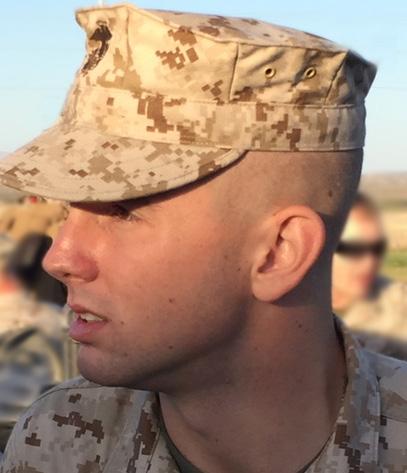



By Maurice D. Wilson, MCPO USN (Ret), President/Executive Director, NVTSI.org
When every young man and woman raises their right hand and takes the oath to serve, they are immediately sent through a deliberate, structured process—boot camp. The goal of boot camp is clear: transform civilians into soldiers, sailors, airmen, Marines, Guardians, and Coast Guardsmen capable of operating in the most demanding environments in the world Yet, when the uniform comes off and the service ends, there is no equivalent “reverse boot camp.” Veterans exit military life carrying the same discipline and resilience but often without the roadmap to translate those qualities into their next mission. Without a structured reintegration process, many uncertainties, disconnection, and what we call purpose anxiety.

3. Mindset – Must Change
4. HABE – The Maintainer
5. Self-Talk and Affirmations – The Programmer
6. Replacement Picture – Your New Identity
7. Live with Purpose on Purpose – The Next Mission
8. Human Agency – Your Built-In ChatGPT
9. Career DNA – Your Unique Blend of Skills, Values, and Experiences
Each of these helps veterans reclaim their identity, align with purpose, and thrive in civilian careers and communities.
Story 1: From Rank to Relevance
James, a retiring Navy Chief, spent over two decades leading sailors and managing complex operations. Yet as he prepared to transition, he struggled with identity: “Who am I without the anchors on my collar?”
This is where the STARR-REBOOT: Shore-Based Transition Assistance and Reintegration Readiness Orientation steps in. Conducted by National Veterans Transition Services, Inc. (NVTSI.org) in partnership with the San Diego Veterans Coalition and local military installations, STARR equips veterans, transitioning service members, and their families with the tools to thrive in civilian life. Much like boot camp builds a warrior, STARR builds a reintegrated veteran— ready for purpose-driven careers, families, and communities.
San Diego is home to more than 240,000 veterans and thousands of active-duty service members preparing to transition each year. While the military prepares us for war, few are adequately prepared for peace. National data shows that nearly 66% of transitioning service members leave the military without a civilian job, and more than half experience underemployment or identity struggles within the first year. The STARR Orientation addresses this head-on. It is a deliberate, evidencebased process that empowers participants to realign identity, mission, and purpose. It’s not about “what job can I get?”—it’s about who am I now, what do I bring, and what mission am I meant to pursue?
At the heart of STARR are nine powerful concepts that act as pillars of transformation.
1. Self-Awareness – The Military Construct
2. Systems Thinking – It’s All Connected
Through STARR, James confronted his military construct. He realized that while his rank defined his role in the Navy, his leadership, problem-solving, and mentoring abilities defined who he truly was. By crafting a replacement picture, he began to see himself as a mentor and trainer in the civilian workforce. Today, James works in workforce development, coaching young adults to build careers. His mission is clear: “I don’t just train workers. I train future leaders.”
Story 2: Rewriting the Inner Script
Maria, a Marine Corps veteran, entered the workshop overwhelmed by negative self-talk. After years of high-stakes deployments, she returned home feeling unworthy and uncertain. Her HABE—habits, attitudes, beliefs, expectations—kept her stuck in a cycle of doubt. STARR introduced Maria to affirmations and self-talk as tools of reprogramming. She learned to replace “I’m not qualified” with “I bring unique value.” She created a vision of herself as a project manager in the clean energy sector—an industry she was passionate about. Six months later, Maria is leading renewable energy initiatives in San Diego. Her words today?
“I stopped doubting myself and started living with purpose, on purpose.”
Story 3: Finding a New Mission in Community
David, an Army veteran, had a difficult time adapting to civilian life. He missed the camaraderie of his unit and felt isolated in his new community. In STARR, David discovered systems thinking—the idea that his life was interconnected and that he wasn’t meant to navigate it alone. He embraced his human agency and chose to
reinvest his leadership skills into community service. With his new career DNA in hand, David transitioned into nonprofit management, building programs for atrisk youth. He often shares with peers: “I didn’t lose my mission—I just reassigned it. Now, my battlefield is my community, and my weapon is mentorship.”
What makes STARR unique is its community-centered model. Delivered in partnership with the San Diego Veterans Coalition and supported by local military installations, the workshop ensures veterans are not left to figure transition out alone. Participants connect directly to community resources, employers, colleges, and peers who walk with them long after the workshop ends.
The result? Veterans who don’t just survive transition but thrive. They find careers that match their strengths, communities that welcome their leadership, and missions that give their post-service lives deep meaning.
Every veteran went through boot camp to prepare for service. Every veteran deserves a reintegration “boot camp” to prepare for civilian life. The STARR Community Reintegration Workshop is that process. San Diego is leading the way, but this model can—and must—be scaled nationwide. If you are a transitioning service member, veteran, or military spouse, don’t go it alone. Sign up for a STARR Orientation at NVTSI.org.
For employers, community leaders, and fellow veterans: join us in ensuring no one takes off the uniform without a roadmap to their next mission. Reintegration is not just about finding a job—it’s about reclaiming identity, purpose, and agency.
Because once a veteran finds their next mission, they don’t just change their life—they change the world around them.

Straight-forward legal tips for Military and Veteran Business Owners
By Kelly Bagla, Esq. www.BaglaLaw.com

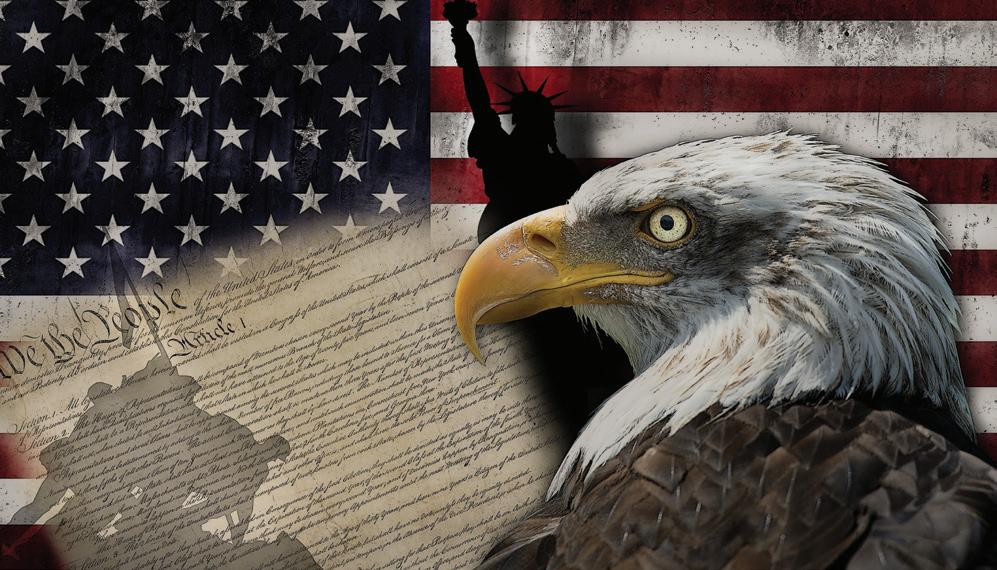
Your employee handbook can be the foundation of employee performance and a shield against lawsuits, or it can be a ticking time bomb that confuses employees and strips away your legal defences. A well-written employee handbook can make the difference between these two outcomes.
Here are ten common mistakes you should avoid:
1. Adopting a “Boilerplate” Handbook
Avoid using a cookie-cutter template. It can be helpful to review a template or the handbooks of similar companies when drafting your own. But, in the end, your company is unique, and your handbook should be specifically tailored to your organization’s policies and actual practices.
2. Not including All Policies in the Handbook
Employers often draft new policies as laws change and new situations arise in the workplace. Include all important new policies in the employee handbook. Employees should not have to review the bulletin board in the break room, and other miscellaneous policy announcements in addition to the employee handbook to learn the company’s policies.
3. Omitting Disclaimers
All employee handbooks must include a disclaimer that nothing in the handbook creates a contract for employment or alters the employee’s at-will employment relationship. Remove any 90-day probationary period language if your employees are at will. Also include a disclaimer that the handbook cannot address every possible situation that could arise in the workplace.
4. Not Having an Effective Anti-Harassment Policy
The employee handbook should let employees know what harassment is and what they must do about it if it happens to them in the workplace. The handbook should describe the procedure employees need to follow to report an incident of harassment, including

the specific person to whom an employee should report the harassment, and an alternate person if the person designated under the policy, is the alleged harasser. The handbook also may include a form for employees to report workplace harassment, although employers must promptly investigate any complaint, even if the employee does not submit it in writing.
Too
A blanket prohibition against employee speech that could reflect negatively on the company may violate the employee’s rights under Section 7 of the National Labor Relations Act. In addition, employees have the right to discuss wages and other work issues with fellow employees without reprisal. But the handbook may clearly state what is not allowed, including slanderous, discriminatory or harassing posts. The handbook should prohibit the disclosure of proprietary or confidential company information as well. You may also suggest that employees make it clear when a post is their opinion and not necessarily a stance of the company.
Employee handbook policies should list the type of conduct that may result in employee discipline, up to and including termination of employment. However, you should not delineate a rigid step-by-step disciplinary system from which the company cannot deviate. Disciplinary policies should always include the disclaimer that the company reserves the right to skip one or more steps as necessary depending on the severity of the infraction.
Enforce the policies in your handbook the same way with everyone, every time. Inconsistent enforcement can have a negative effect on company morale. Even worse, it can subject the company to claims of discrimination if the company disciplines employees differently for the same infraction.
Make sure managers and supervisors receive regular training on employee handbook policies so that they are implemented correctly and effectively. Once trained, management and supervisors should periodically review the employee handbook policies to assess whether they are being applied consistently throughout the company.
Keep your employee handbook concise, avoid legalese, and make sentences clear and direct to eliminate potential ambiguity. You cannot include every possible situation that may arise, and you should avoid going into extensive detail on every management policy.
Laws and regulations can change, so have your employment legal counsel review the employee handbook on a periodic basis to keep it up to date. Be sure to alert employees to any updates and have them sign an acknowledgement that they received an updated copy of the employee handbook.
There is a lot to consider when planning and implementing an employee handbook. When you do it the right way, it will be a valuable tool for everyone at your company for years to come.
If you need help determining if your employee handbook meets the latest legal standards, we can help. Please visit my website at www.BaglaLaw.com

Disclaimer: This information is made available by Bagla Law Firm, APC for educational purposes only as well as to give you general information and a general understanding of the law, and not to provide specific legal advice. This information should not be used as a substitute for competent legal advice from a licensed professional attorney in your state.
By Barbara Eldridge www.mindmasters.com

Our column last month was a full-on wake-up call to get your financial records in order before tax time—and to understand exactly where you stand from a profit-andloss perspective. Hopefully, you’ve taken some time to review, organize, and catch up.
Now is also the time to assess other key aspects of both your business and yourself. A strategic analysis helps you understand where your business stands in today’s market, but it’s equally important to evaluate your personal strengths and weaknesses
Self-reflection is foundational to building an effective plan for your business. Ask yourself: Have you grown or strengthened certain areas, or slipped back into old habits? Are your actions aligned with your core values? Your values shape your behaviors—living in integrity with them determines how you lead and make decisions.
A few years ago, I interviewed one of my clients on a Blog Talk Radio show who emphasized that as a business owner, you are an investor—someone who builds wealth and creates lasting value.
Does that mindset fuel your motivation to reach your goals? Does it sustain you through challenges? When you think about it, there’s virtually no area of life or business untouched by money. Expanding your understanding of money means exploring how it influences every decision, every transaction, and every opportunity. Remember: consistent investment and perseverance pay off. Small, steady investments of time and money lead to long-term success.
Knowing this, I hope you’re inspired to end the year with a bang. The 11th hour is your chance to gear up— to double down, give your best effort, and finish strong. November and December don’t just close out the year; they set the stage for a powerful start to 2026.
Taking time to assess where you are helps you recommit to excellence this quarter. Spend a few moments each day visualizing success—feeling the thrill of victory that comes from knowing you gave it your all.

Most people see the 11th hour as the beginning of the end. But for you, it can be the beginning of a new beginning. The key isn’t how much you spend—it’s how intentionally and consistently you reinvest in your business.
Before you can shift your approach, start by reviewing your current financial reality:
1. What are your core beliefs and mindset about money?
2. What new avenues exist to increase your revenue?
3. How can you better track and manage your sales?
4. Where can you reduce costs or unnecessary spending?
5. Are you managing credit and debt to support smart decision-making?
6. Have you established clear savings and investment goals for the future?
The 11th hour is not the end—it’s the spark of what’s next.
As William James said:
“The greatest revolution in our generation is the discovery that human beings, by changing the inner attitudes of their minds, can change the outer aspects of their lives.”

Barbara Eldridge President/ Founder of Mind Masters where business owners tap the synergy of energy, commitment and excitement for each other to raise the bar for each other’s goals, brainstorm ideas, create solutions, and offer mutual support. Checkout how a Group help you create personal, professional and financial growth. www.mindmasters.com

www.dreammakerfranchise.com/veterans-franchising-opportunity
By Joseph Molina veteransccsd@gmail.com
One powerful tool for accelerating business growth is connecting with a Local Veteran-Owned Business Networking Group These are Veteran-Focused groups that are uniquely positioned to help Veteran-owned businesses access resources, increase connections and improve sales.
Here are the key benefits of engaging with a Local “Veteran-Owned Business Networking Groups” especially during the early stages of your business or if you transitioned out of the military recently.
1. Shared Experience & Peer Understanding Veteran-run networking groups provide a community where members share a common background: discipline, service, and the challenge of translating military skills into business success. This shared context fosters trust, mentorship, and relevant advice. When someone has “walked the walk,” advice about dealing with leadership transitions, mission planning, or operational efficiency resonates more deeply than generic entrepreneurship tips.
2. Access to Veteran-Specific Resources & Training
Many Veteran-focused groups offer specialized programming—workshops, seminars, or webinars— designed to address issues unique to Veteran entrepreneurs and help with navigating government contracting (VA, SBA, NVCC), to access military-specific procurement opportunities or Business funding.
Translating military credentials into small business credentials or even shifting from mission-driven structure to market-driven business. These groups often partner with government and private organizations such as, Veteran affairs offices, local municipalities, or nonprofit foundations providing resources to help you expand your business.
3. Greater Credibility & Brand Distinction
Being part of a Veteran-business networking group helps validate a business in the eyes of clients and partners who value “Veteran-owned” status.


Networking in these groups can open doors, expand connections, increase access to resources building credibility with suppliers, or attracting customers who prioritize buying from Veterans.
4. Referrals, Partnerships & Sales Opportunities
Local Veteran-owned business networking groups bring together Veteran entrepreneurs from different industries. These connections translate into referrals, joint ventures, and practical partnerships.
For example, a Veteran business in logistics may connect with another in security or tech, enabling cross-referral or bundling services. Also, members often share bid notices, lead sites, RFPs, or subcontracting opportunities. These direct connections can lead to immediate sales or contract wins.
Transitioning from the structured, mission-oriented environment of the military to the ambiguity of business ownership can feel isolating. Veteran networking groups also work as support groups: peers processing similar challenges, managing uncertainty, defining new purpose. This emotional backbone helps retain motivation and resilience—qualities that translate to sustained effort in business.
Conclusion
For Veterans embarking on entrepreneurship after military service, Local Veteran-Owned Business Networking Groups are like social clubs with a Business twist serving as business accelerators.
With their unique understanding, specialized resources, credibility, referrals, and mutual support, these groups help Veteran entrepreneurs build deeper connections and increase sales more rapidly. Being intentional about joining and contributing to such networks can make a world of difference creating a positive impact for a strong, sustainable growth.
If you’re a Veteran-Owned Business, exploring “Veteran-Owned Business Networking Groups” can be of great benefit for your business. Here is the link to find a local Veteran-Owned Business Networking Group
(leadership.my.canva.site/veteran-owned-business-groups)
Franchise Wealth Consultants is dedicated to helping you achieve your entrepreneurial dreams and secure your financial future through business ownership.
Our Ideal Franchise Candidates Include:
• Aspiring entrepreneurs eager to control their future.
• Professionals aiming to transition from the corporate world.
• Investors seeking semi-absentee or passive income opportunities.
• Experienced operators looking to expand their portfolios.
• Veterans, public service professionals nearing retirement, and former corporate management professionals represent the largest segment of our franchisee base.
• Franchising offers a proven business model and brand recognition
• FWC helps you successfully navigate the world of franchising, which can be overwhelming if you are not familiar with the process.
• We have access to the largest inventory of top-performing franchises through the IFPG network, the largest franchise network available.
Our Consultations & Services
Why is it free? Our consultation comes at no cost to you because we’re compensated by the franchise companies—not by our clients. This means you get unbiased guidance and support, with your best interests as our top priority. So, there is not only no fee, but no obligation on your part.
• Always personalized recommendations and expert guidance
• We’ll help you find the perfect franchise that aligns with your lifestyle, personality, goals, and budget - at no cost to you
• Clear, honest answers to your questions
• Need to explore financing options for your franchise? We can connect you with trusted partners.
We’re more than just consultants. We are your strategic partner. Franchise




By Hadley Wood www.hlinwood-insurance.com

“It takes 20 years to build a reputation and a few minutes of cyber-incident to ruin it.”
-
Stephane Nappo - Global Head Information Security or Société Générale (International Banking pole)
Cyber threats are real and everywhere. The government knows this, big business knows this, and any medical, civic institution and bank knows this. But did you know that 25% of cyber attacks are on small business owners?
Cyber-attacks are on the rise and most General Liability insurance policies offer limited, if any, cyber protection. Cyber insurance can protect the business from liability stemming from a breach of data that is controlled by the business owner. In simple terms, Cyber Coverage protects your business in case someone hacks into your data and uses that data to connect with your contacts, blackmail your contacts (or you), hijacks your bank accounts, creates harmful statements about your company and/or your clients, vendors, contacts and associates.


The Cyber Claims by % of incident, are currently:

If you have a business that creates, processes, stores or controls critical data, you will want to look into having Cyber coverage. It can be purchased as a stand-alone policy and the rates will be determined by the over all risk. If you see that Cyber coverage is included in your policy, make sure to ask your Broker about exclusions, coverage limits, monitoring tools and any deductibles that may apply.
Cyber threats are real and everywhere.
A stand-alone (separate from your General Liability) Cyber Liability coverage policy should cover first and third-party damages. Meaning, it should cover your company and also any clients, vendors, subcontractors, etc., for damages the cyber-attack/data breach causes. Cyber coverage typically comes with access to IT experts, forensic specialists, proactive tools to consistently manage cyber risk, backend dark web monitoring services and more. Damages should include restoring lost data, business interruption costs, cost of notifying damaged parties, reputational repair, and more.
The dynamic world of cyber coverage changes every minute and is constantly evolving to meet the needs of the risk and to stay one step ahead of the evasive cyber criminals.
For more information about this or to speak with an experienced Cyber Liability insurance broker, please contact 760-828-0403 or visit www.hlinwood-insurance.com

With billions of records exposed in recent data breaches, it’s safe to assume that, unfortunately, your personal information such as your name, Social Security number, and email address have been exposed.
There’s more bad news as veterans and active duty military members are 76% more likely to report identity theft than civilians, according to the Federal Trade Commission (FTC). So where does your personal information end up? It can end up on the dark web.
The dark web is a hidden part of the internet often associated with criminal activity, including the sale of stolen personal information. Knowing if your personal data is on the dark web is crucial for protecting your identity and your finances
How to Check if Your Personal Information Is on the Dark Web
1. Watch for Warning Signs: A sudden influx of spam or phishing emails from unknown senders can indicate that your email address has been exposed on the dark web. Alerts for applications for credit cards or other lines of credit using your Social Security number that you didn’t authorize also are signs your information is exposed.
2. Use Dark Web Monitoring Services: Dark web monitoring services are available that monitor for your email address, Social Security number, and other data on the dark web. These tools can alert you if your information has been compromised.
Personal information is valuable on the dark web because it can be exploited for various malicious purposes:
• Identity Theft: Hackers can use your details to open credit accounts, apply for loans, or commit fraud in your name.
• Phishing Scams: Compromised emails are often targeted with scams designed to steal more sensitive data, such as passwords or financial information.
• Credential Stuffing: If you reuse passwords, hackers can use stolen login credentials to try to access multiple accounts.
• Resale of Information: Hackers frequently sell personal data to other criminals.
What to Do if Your Information Is on the Dark Web
If you discover that your personal information has been compromised, take immediate action to mitigate the risks:
1. Change Your Passwords: Update passwords for all accounts, using strong, unique combinations. Enable multi-factor authentication (MFA) wherever possible.
2. Monitor Accounts: Regularly check your bank statements, credit reports, and online accounts for possible suspicious activity.
3. Consider a New Email Address: If your email is heavily targeted, switching to a new address and notifying trusted contacts may be a safer option.
4. Report to Authorities: File a report with local law enforcement and federal agencies such as the FTC to document the breach.
5. Invest in Identity Protection Services: Consider enrolling in identity theft protection and credit monitoring services for added security.
By staying vigilant and taking swift action, you can minimize the impact of having your information exposed on the dark web.
For more information visit www.identityiq.com

As the year draws to a close, Warrior Foundation Freedom Station once again stands at the forefront of honoring our nation’s ill and injured service members through a series of powerful year-end initiatives. From reuniting Warriors with their families for the holidays to forging strong community partnerships, every effort reflects our foundation’s unwavering mission—to assist, honor, and support the men and women who have so bravely served our country.
Each November, our nation unites in gratitude to honor the brave men and women who have worn the uniform of the United States Military. At Warrior Foundation Freedom Station, Veterans Day holds special meaning—it represents not only remembrance, but action. Through year-round programs that restore independence and dignity, we strive to ensure that our Warriors know their sacrifices are never forgotten. Veterans Day marks the beginning of a season where gratitude turns into giving, compassion becomes community, and service continues in powerful ways.

For many service members recovering from serious injuries or illnesses, the holidays can be an especially difficult time. Each year, we provide flights for Warriors, ensuring they are reunited with their families during the holiday season.
This tradition has grown into one of our most cherished programs, embodying the true spirit of the season. The emotional reunions are filled with laughter, tears, and gratitude—moments that allow Warriors to return with full hearts, ready to focus on recovery and healing.
For those who are unable to travel home, Warrior Foundation flies their loved ones to the Warrior instead. It’s a powerful reminder that behind every uniform is a person whose courage and sacrifice deserve both recognition and rest.
Following the flights home, the holiday spirit continues as Warrior Foundation Freedom Station distributes gifts to our ill and injured Warriors. The annual Holiday Gift Handout Day brings cheer to the Warriors, staff, volunteers, and supporters who come together to share in giving overstuffed duffel bags filled with gifts, essentials, and heartfelt messages of appreciation.



In an inspiring show of community support, SeaWorld San Diego has partnered with Warrior Foundation Freedom Station through its monthly Military Appreciation Days to honor our nation’s Warriors. As part of this partnership, Warriors are treated to an exclusive Dolphin Encounter—a day filled with adventure, appreciation, and meaningful connection. These up-close animal experiences highlight the extraordinary connection between humans and animals—one that often brings hope, joy, healing, and a renewed sense of purpose. SeaWorld’s Animal Rescue mission of giving animals a second chance at life beautifully parallels our own mission of helping Warriors create new chapters in their lives. This collaboration exemplifies how community partnerships can foster truly meaningful and joyful experiences for those who have sacrificed so much.
Together, these events represent more than just a calendar of activities, they embody the very heartbeat of Warrior Foundation Freedom Station. Each flight home, each gift delivered, each partnership forged contributes to a greater purpose: restoring independence, dignity, and hope for America’s Warriors.
As we celebrate the close of another remarkable year, Warrior Foundation extends heartfelt thanks to its supporters, volunteers, and community partners. Your generosity and compassion continue to prove that the true strength of our nation lies not only in those who serve—but also in those who stand beside them.

“When we fly a Warrior home, hand them a gift, or give them a safe place to heal—we remind them that they are never alone. That’s what the holiday season
Andrew Gasper, CEO, Warrior Foundation
The essence of Warrior Foundation Freedom Station is this: we are not just homes, but hope. Not just support, , and most importantly, not just words, action. Visit WarriorFoundation.org for more information, to donate, or to get involved.


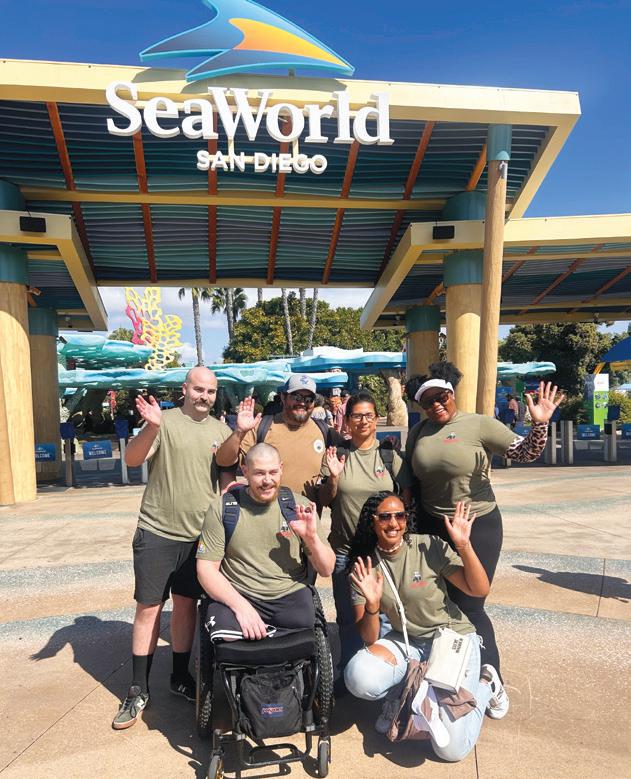



During this season of giving, Camp Corral salutes the many donors whose generosity makes it possible for the children of wounded, ill and fallen U.S. veterans to experience the transformative power of summer camp, at no cost to the camper’s family.
A national nonprofit created in 2011 for the purpose of giving back to the military community in a meaningful way, Camp Corral’s mission is to transform the lives of children of wounded, ill or fallen U.S. veterans. Summer Kids Camp is the organization’s signature program and 38,000 children, from every state in the nation, have participated in the camp over the past 14 years thanks to the generous contributions and resources provided by Camp Corral partners and donors. Still, the camper wait list is long each year, and the need for funding grows with it.
“We are immensely grateful to the individuals and organizations who extend a helping hand in support of our nation’s youngest heroes,” says Camp Corral CEO Phil Kowalczyk. “With continued contributions and shared resources by all those who want to support veterans and their families, we will continue to make the potentially life-changing childhood tradition of summer camp available to those who we understand may need it most.”
Research shows that military-connected children benefit from the transformative summer camp experience more than most, and Camp Corral’s week-long sleep-away Summer Kids Camps are designed to support the unique needs and challenges of those children who have endured the trauma of having a parent become wounded, ill or fallen as a result of military service. While testing their limits and celebrating their accomplishments in the great outdoors, campers make peer connections and develop a support group, build coping skills and increase self-confidence.
This summer, Camp Corral will hold 23 camp sessions across 19 states, from early June through mid-August. Participation is open to children (ages 8-15) of wounded, ill and fallen military heroes. Dates and locations are announced mid-November on the organization’s website, www.campcorral.org; camp registration will open January 14 on that same site.
Camp Corral also holds a series of Family Camp Weekends each spring and fall, with seven camp weekends across six states planned for 2026. These all-inclusive camp retreats are intended to support the needs of wounded warrior families and provide opportunity for respite, connection, growth and healing as a family unit. To learn more about 2026 Family Camp dates, locations and registration: www.campcorral.org
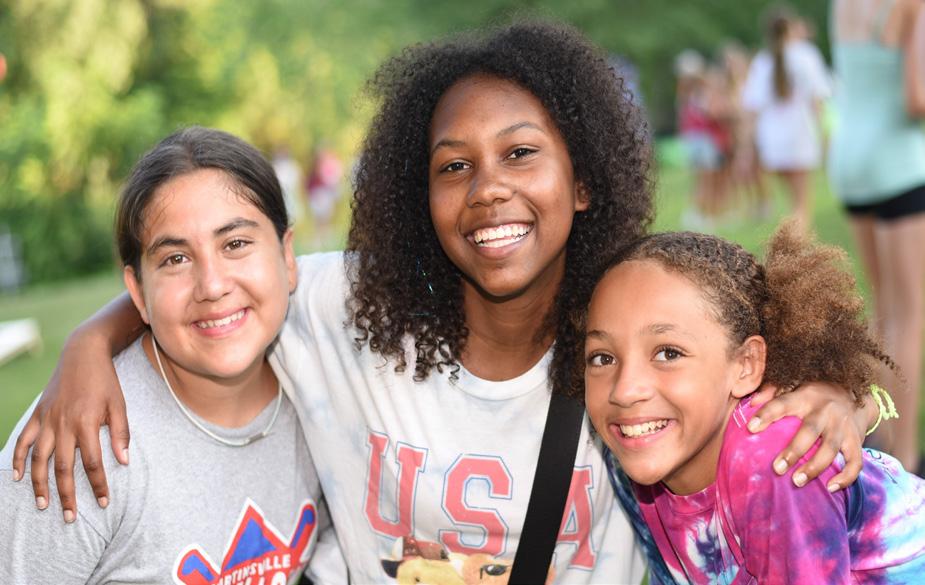



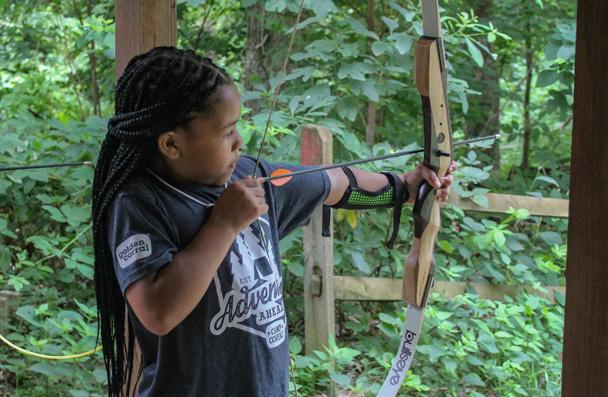
Providing support beyond the camp experience, Camp Corral offers the SALUTE Leadership Program for teens 16-17 years old. This unique program offers continued connection for children who have aged-out of the Summer Kids Camp, and provides them with an opportunity to learn how to become a camp counselor while preparing for a future in post-secondary education, military service or their first career. Participants strengthen leadership skills, engage with other counselors in training, and develop self-confidence through curriculum designed to build on the resilience and determination of military-connected youth.
Research drives all Camp Corral program development and has shown that while militaryconnected children can be resilient, they can also have higher rates of risk-taking behaviors. About 10% of campers’ parents surveyed stated that their child has participated in self-harm or had suicidal ideations – a startling statistic, especially when considering the organization’s camper age group is 8-15 years old.
Combatting that statistic head-on, Camp Corral programs promote what they call the 3Cs of Resilience: Connection, Coping, and Confidence. According to research, connection especially, is vitally important for children of wounded, ill or fallen warriors, as these children can often experience feelings of isolation due to circumstances related to their parent’s service. Camp Corral provides meaningful opportunities to make life-affirming friendships that remind military children that they are not alone, that there are others who understand their unique attributes and challenges.
In addition to research and program development, Camp Corral actively advocates on behalf of the children and families they serve. Although that advocacy takes many forms, from local- to nationallevel initiatives, all efforts are conducted with one goal in mind: empowering the children and families of the nation’s military heroes to live their best lives.
Individuals and organizations interested in how to support Camp Corral and help a child experience the transformative power of summer camp, can find information and details at www.campcorral.org/donate

During U.S. Army basic training, Dez Del Barba started to feel pain in his legs and a sore throat. One week later, he was fighting for his life.
He had Strep A, which turned into necrotizing fasciitis. Dez was given a 10% chance of survival. Doctors amputated his left leg, and his right leg was left permanently damaged with drop foot, requiring a brace.
PTSD and anxiety left him isolated and uncomfortable being out in the world.

“I was going through the motions, living day to day,” Dez says. “Then I met Service Dog Moby.”
After a life-changing diagnosis or injury, a service dog can be the perfect treatment. Founded in 1975, Canine Companions created the concept of the modern service dog. Today, over 8,400 teams have been placed, including over 600 of our nation’s veterans – entirely free of charge.
Dez recalls, “Meeting Moby was the best day of my life. It was pure joy and an instant connection. There are no other words to describe it.
”Canine Companions trains service dogs to assist veterans with a variety of everyday tasks, enabling them to move more freely and reintegrate into their communities.
Service Dog Moby helps Dez with physical tasks, such as turning on lights, retrieving his phone and wallet, and assisting in grabbing the supplies he needs to put on his prosthesis. Before Moby, Dez had to hop across the room, risking a fall on his remaining damaged leg.
Now Moby is improving his independence, safety and peace of mind.
Moby is also trained to reduce the impact of posttraumatic stress for Dez. “When the nightmares and anxiety come, he physically interrupts them with deep pressure, calming me instantly,” says Dez.
Service dogs for PTSD are trained in physical tasks to reduce anxiety, like making contact with a handler’s leg and nudging with their nose to interrupt anxious behaviors. These expertly trained dogs are also capable of creating a buffer in crowded places, entering a room to turn the lights on and retrieving medication.
Veterans can rely on their service dogs to interrupt and reduce nightmares by providing deep pressure or removing blankets to wake their human partner. Some teams use Canine Companions’ patented CanineAlert™ wearable technology as additional support.
“ Moby has helped me in more ways than any doctor ever has. He has given me a reason to keep going and has shown me what true unconditional love is. Because of Moby, I now have less anxiety going out in public places. He gives me a sense of calmness that I can’t even describe.”
– U.S. Army veteran Dez with Service Dog Moby
CanineAlert™ - The Wearable Tech Augmenting Expertly Trained Service Dogs
Imagine if you could stop a nightmare before it starts. For veterans living with PTSD, CanineAlert can stop a nightmare before it starts. It means no longer reliving traumas night after night. It’s not just a dream. Pairing the expert skills of a Canine Companions service dog with our patented CanineAlert Device makes increased independence possible, night and day.
Over 600 veterans have turned to Canine Companions to regain the hope of a brighter future. With bestin-class service dogs and our patented wearable technology, a life of increased independence is possible. The CanineAlert Device is designed to do just that – revolutionize the way service dogs support individuals with disabilities.

Developed internally and in collaboration with experts in the field, the patented CanineAlert System uses biometric data to monitor the handler’s heart rate through wearable technology. This technology wirelessly communicates with the service dog’s collar device via an app. When irregularities in the wearer’s heart rate are detected, the device triggers a gentle vibration, prompting the service dog to intervene. Through specialized training, the service dog performs specific tasks tailored to the handler’s needs, such as interrupting a nightmare or aiding in their recovery process.
This innovative approach not only provides essential assistance but also facilitates faster and more effective responses from the service dog, ultimately preventing escalation.
With the implementation of the CanineAlert Device, cutting-edge technology operates in tandem with expertly trained service dogs -- enhancing the quality of life for our nation’s heroes.
THE IMPACT OF CANINE COMPANIONS SERVICE DOGS FOR PTSD IS PROFOUND
• 90% of Canine Companions veteran teams report feeling more comfortable in public places.
• 85% of veteran clients experience a decrease in nightmares and night terrors.
• 81% of teams report an improvement in their PTSD symptoms.
• 41% report a decrease in medication use.
“Getting Moby was the greatest decision of my life,” Dez remarks. “He has made every aspect of my life more positive and brighter.”
Learn more at canine.org/veterans

50 Years of Independence
Help Our Nation’s Veterans Regain Independence Through FREE Service Dogs
GET INVOLVED
• Volunteer to raise a future service dog
• Help raise awareness at events
• Join your local volunteer chapter
APPLY FOR A FREE SERVICE DOG
• Learn more about Canine Companions and our best-in-class service dogs for veterans
• Make more matches, sooner. Donate now!
canine.org/veterans


Homeland Magazine sat down with Lori Noonan, CEO of Capacity Builders, Standards for Excellence Licensed Consultant, and Board and Governance Certified Consultant, to discuss how veteran-serving and community nonprofits can strengthen their foundations during challenging economic times.
A seasoned leader with more than 30 years of nonprofit experience — and an in-house contributor to Homeland Magazine and San Diego Veterans Magazine — Lori brings a unique perspective shaped by both her serviceconnected background and her deep work with veteran-serving organizations across the country. Her firm, Capacity Builders, helps nonprofits of all sizes improve leadership, governance, fundraising, and sustainability — ensuring they can continue serving those who served us.

Homeland Magazine: Lori, what inspired you to start Capacity Builders?
Lori Noonan: After three decades in nonprofit leadership — and as part of a military family — I saw too many good organizations struggling not because of their mission, but because of the structure behind it. Passion can start a nonprofit, but systems sustain it.
I founded Capacity Builders to help nonprofits move beyond survival mode. We strengthen strategy, governance, fundraising, and accountability so leaders can spend less time reacting and more time delivering impact. My goal was simple: help build the kind of organizations our veterans, families, and communities can truly count on.
Homeland Magazine:
“Capacity building” is a term we hear often. What does it really mean?
Lori Noonan: At its core, it’s about helping organizations operate at their best. It’s not just about funding — it’s about competence, confidence, and consistency.
We help leaders design structures that attract resources, manage growth responsibly, and maintain ethical, transparent practices. Sometimes that means refining a board’s role, improving donor communication, or creating performance systems that track outcomes.
Strong structure builds strong service — and that’s especially vital in the veteran space, where the needs are complex and growing.
Homeland Magazine: How does the Standards for Excellence® framework help nonprofits stand out?
Lori Noonan: The Standards for Excellence program is like an accreditation for ethical and effective nonprofit management. It ensures organizations have sound governance, clear strategy, financial transparency, and accountability.
When a nonprofit aligns with these standards, it signals to donors, staff, and veterans that they take trust seriously — and that matters more than ever in a tight economy. Donors are asking tougher questions. Funders want to see outcomes. Organizations that demonstrate integrity and professionalism will rise above the rest.
Homeland Magazine: What challenges are veteranserving nonprofits facing right now?
Lori Noonan: Right now, many are facing mission overload. Veteran organizations often grow from personal passion — someone saw a gap and stepped in. That’s powerful, but it can lead to leaders trying to do it all.
In this economy, resources are tighter, and competition for grants and sponsorships is fierce. Collaboration is no longer optional — it’s essential. The veteran service ecosystem is strongest when organizations share data, coordinate outreach, and focus on their core strengths instead of duplicating efforts.
Homeland Magazine: What role can veterans, families, and community members play in supporting these nonprofits?
Lori Noonan: Everyone can play a part — even if you’re not in nonprofit leadership. Ask yourself:
• How can I volunteer my time or professional skills to help a veteran-serving organization operate more effectively?
• Can my business or employer sponsor an event or program that strengthens veteran support services?
• What local nonprofits are filling critical gaps for veterans and families, and how can I amplify their work?
Community support doesn’t always mean writing a check. It’s also about helping these organizations stay visible, accountable, and connected.
Homeland Magazine: What advice do you have for nonprofit leaders in today’s uncertain climate?
Lori Noonan: Be proactive, not reactive. Build infrastructure before the crisis hits. Focus on your people — your team, your volunteers, your board — and give them clarity and purpose.
Sustainability doesn’t happen by accident. It’s built through planning, communication, and alignment. The nonprofits that invest in these things now will be the ones still standing — and thriving — years from now.
Homeland Magazine: Any final thoughts?
Lori Noonan: Veteran-serving organizations play a vital role in the fabric of our nation’s care network. But even the strongest missions need strong foundations.
Whether you lead a nonprofit, work for one, or support one, this is the time to invest in structure, leadership, and collaboration. If your mission matters — and it does — then so does the way you manage it. Build it well, and together we’ll build something that lasts. Learn more about Capacity Builders at www.nonprofitexcellenceprofessionals.org
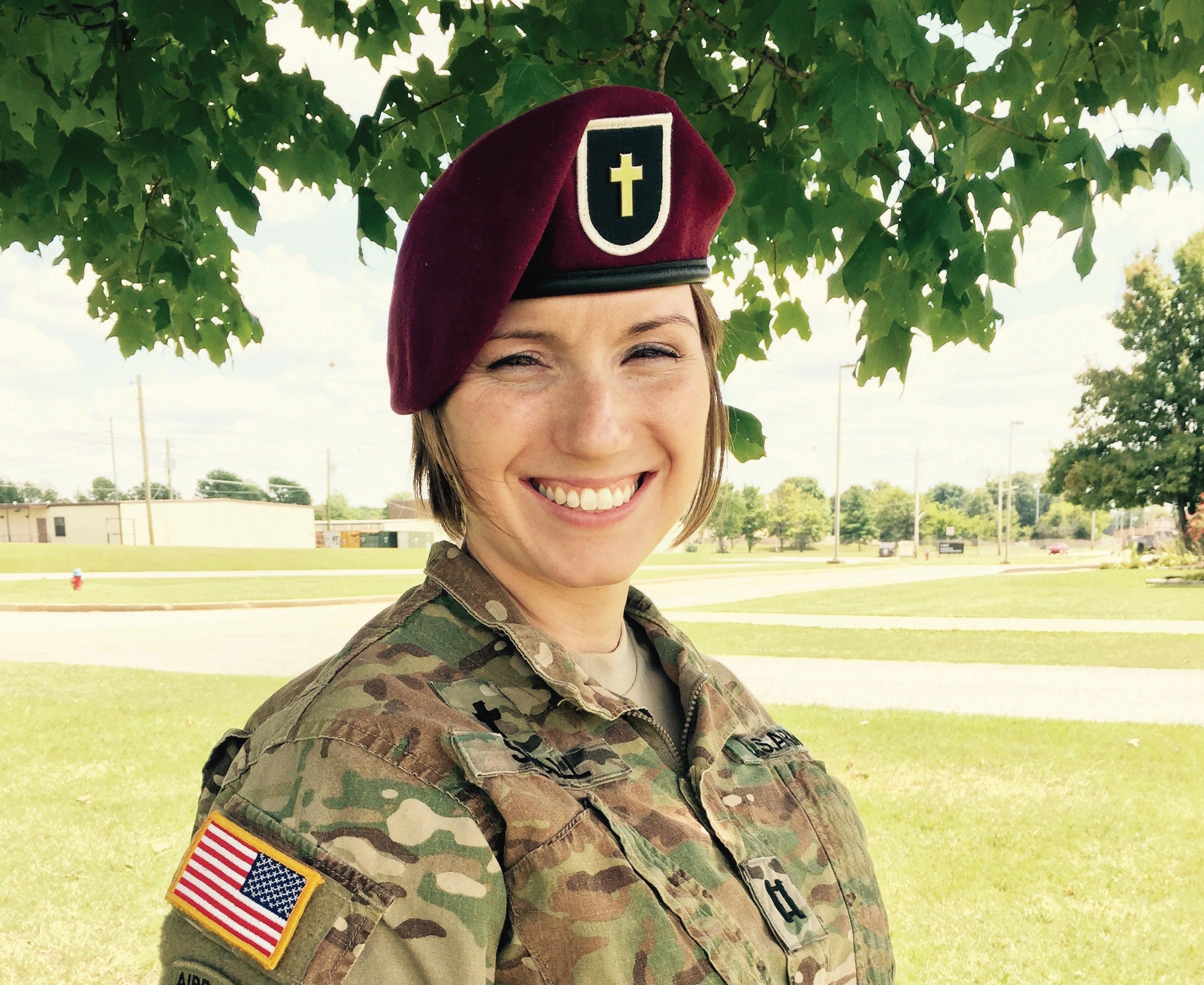




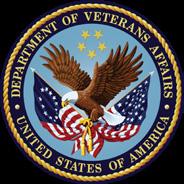










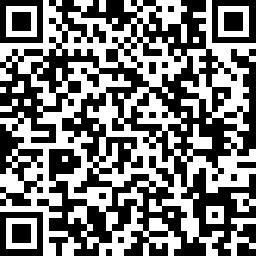

Empowering soldiers with the mental health skills and tools to reinforce suicide protection








